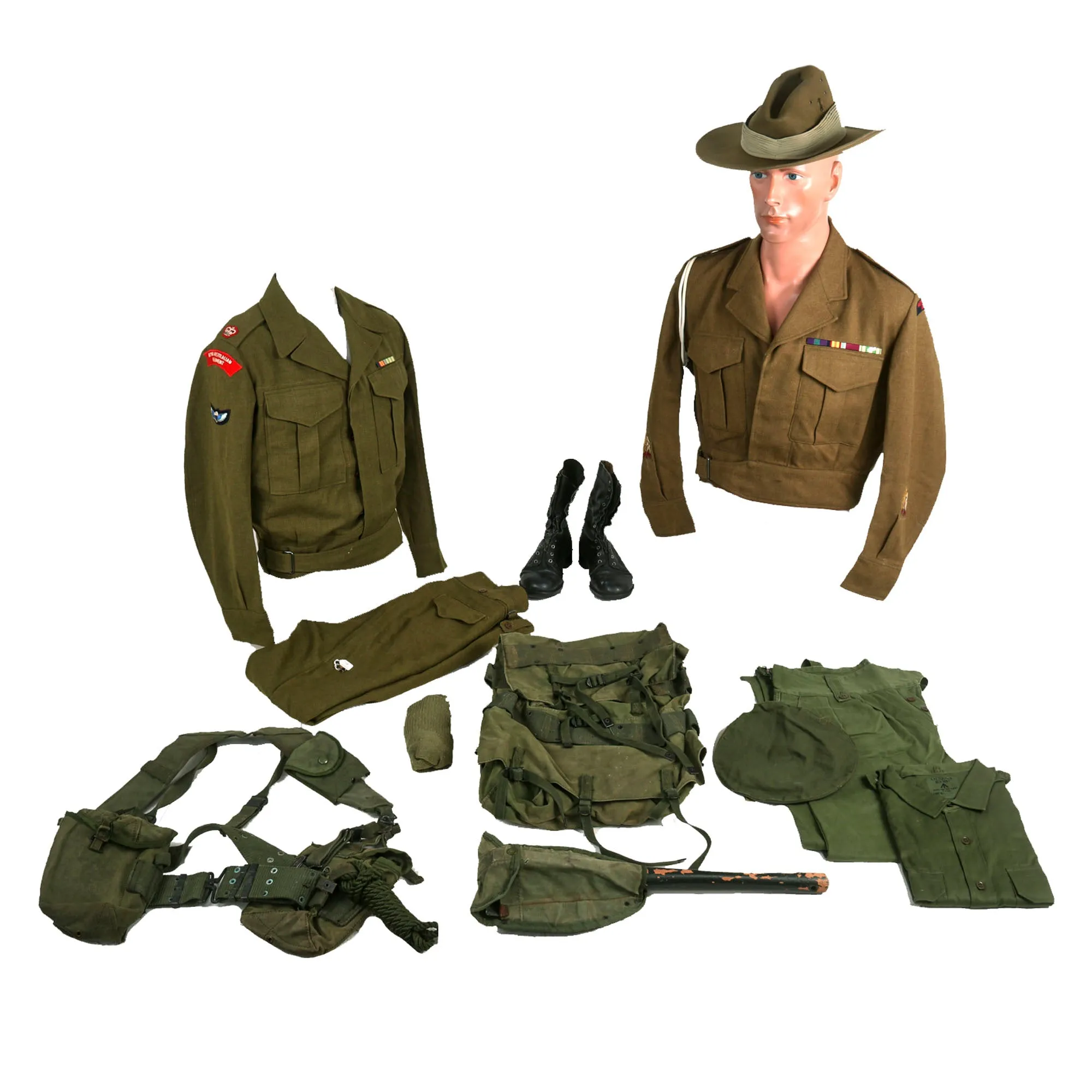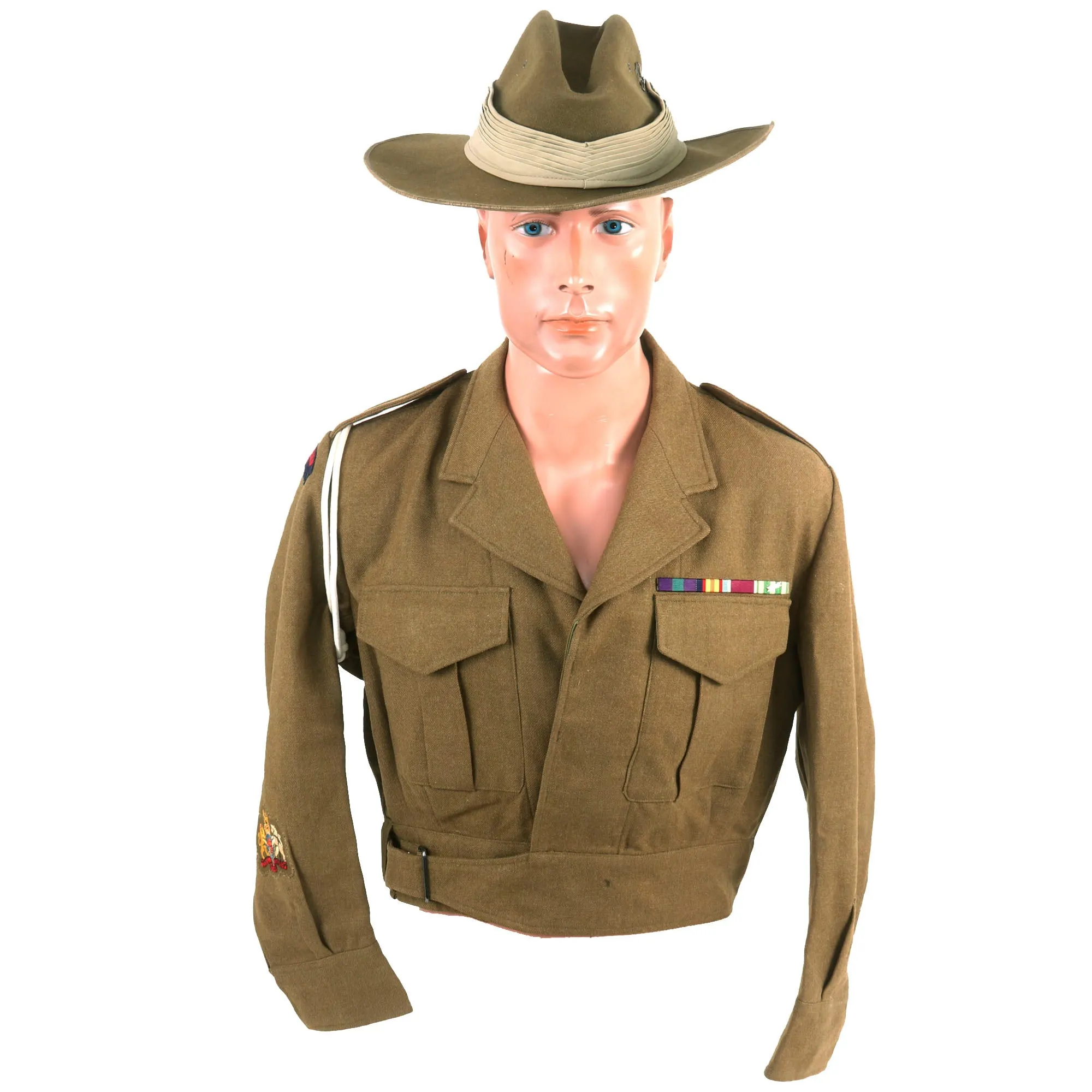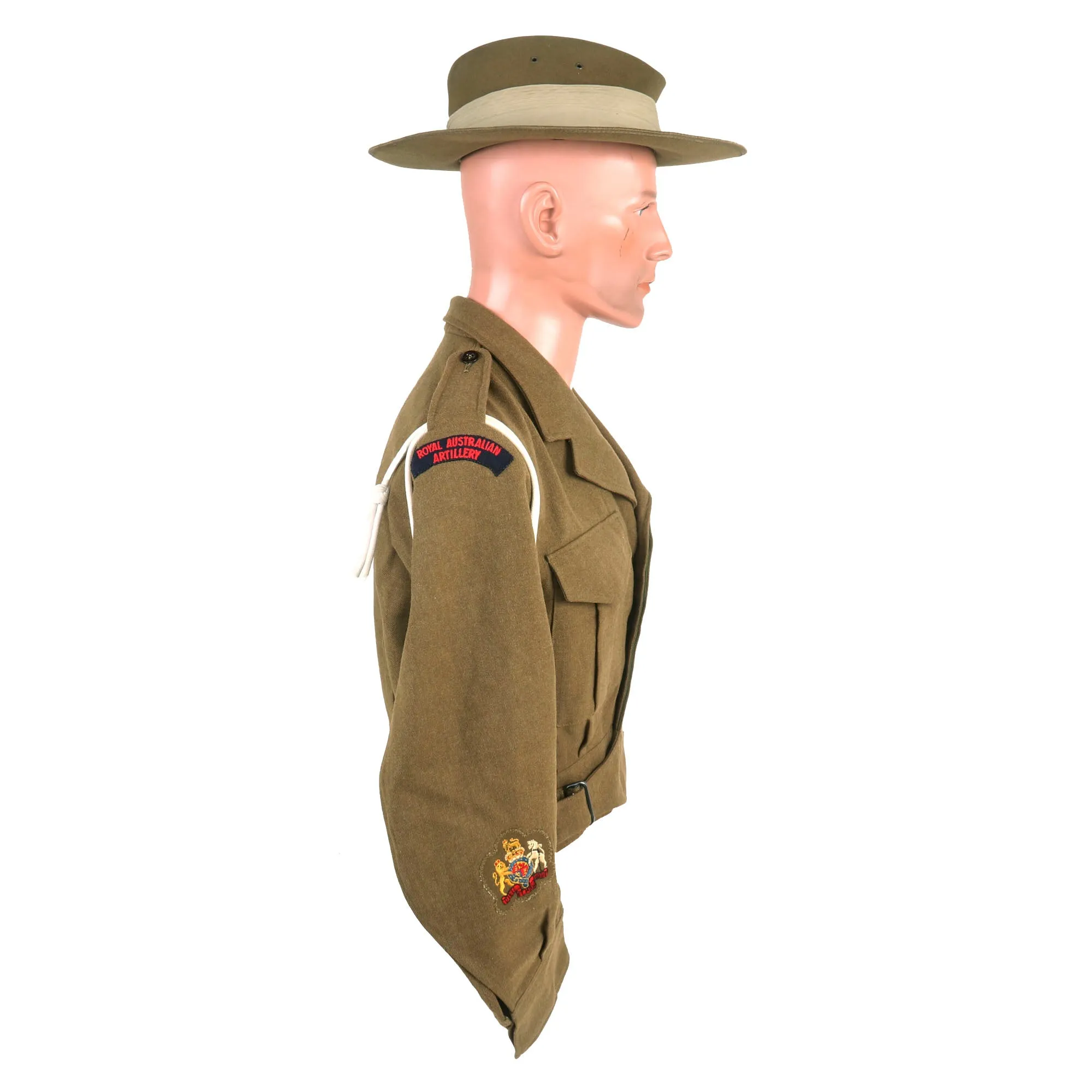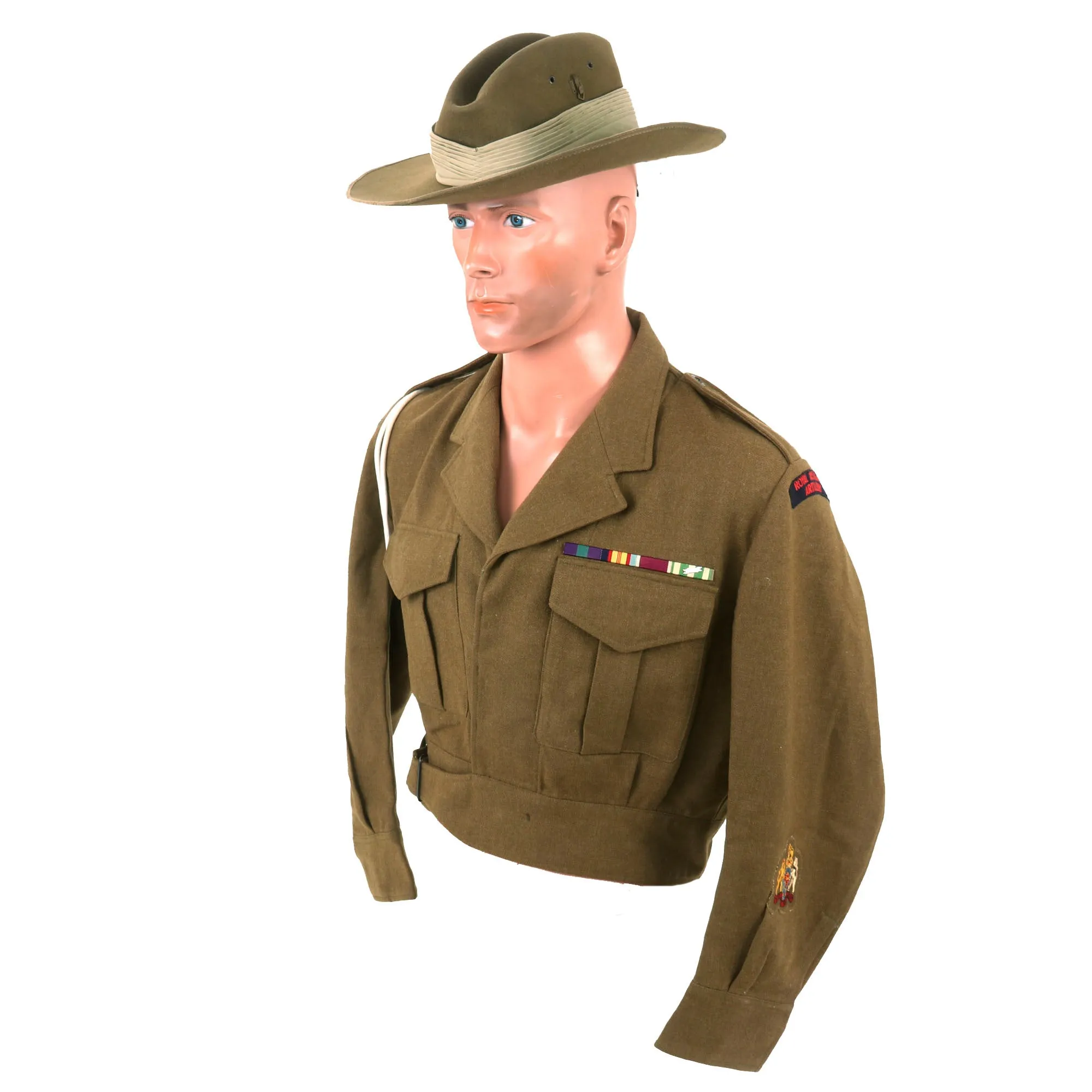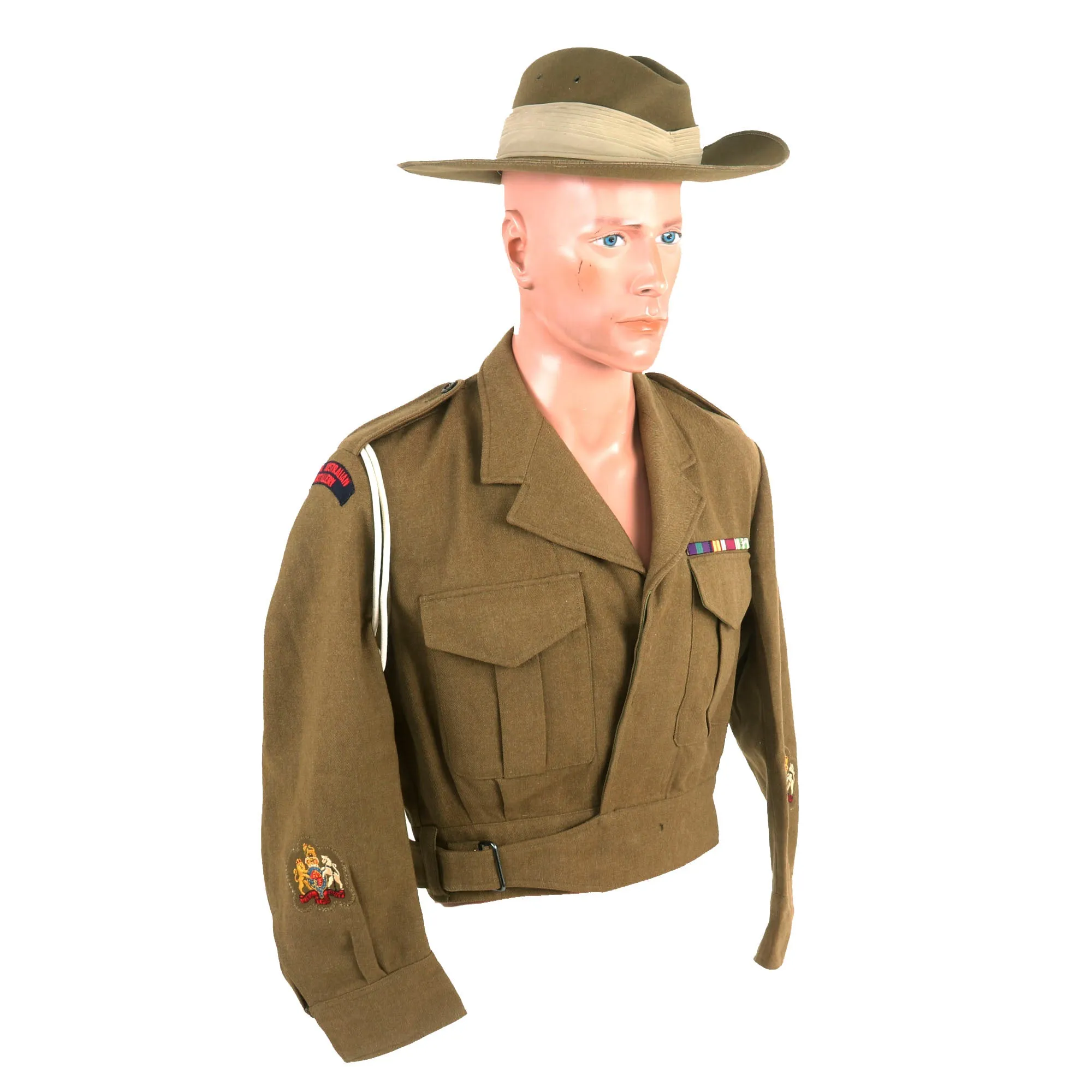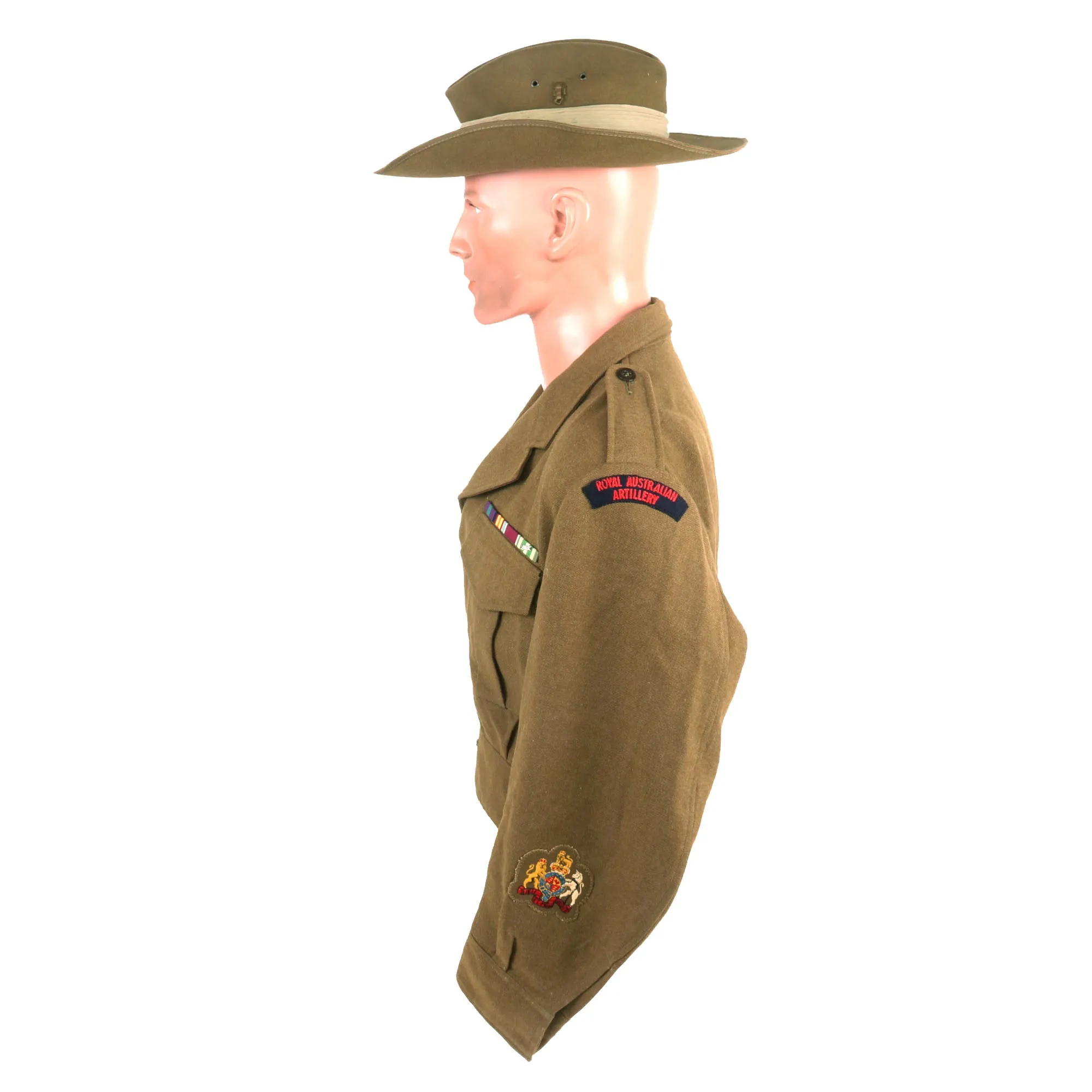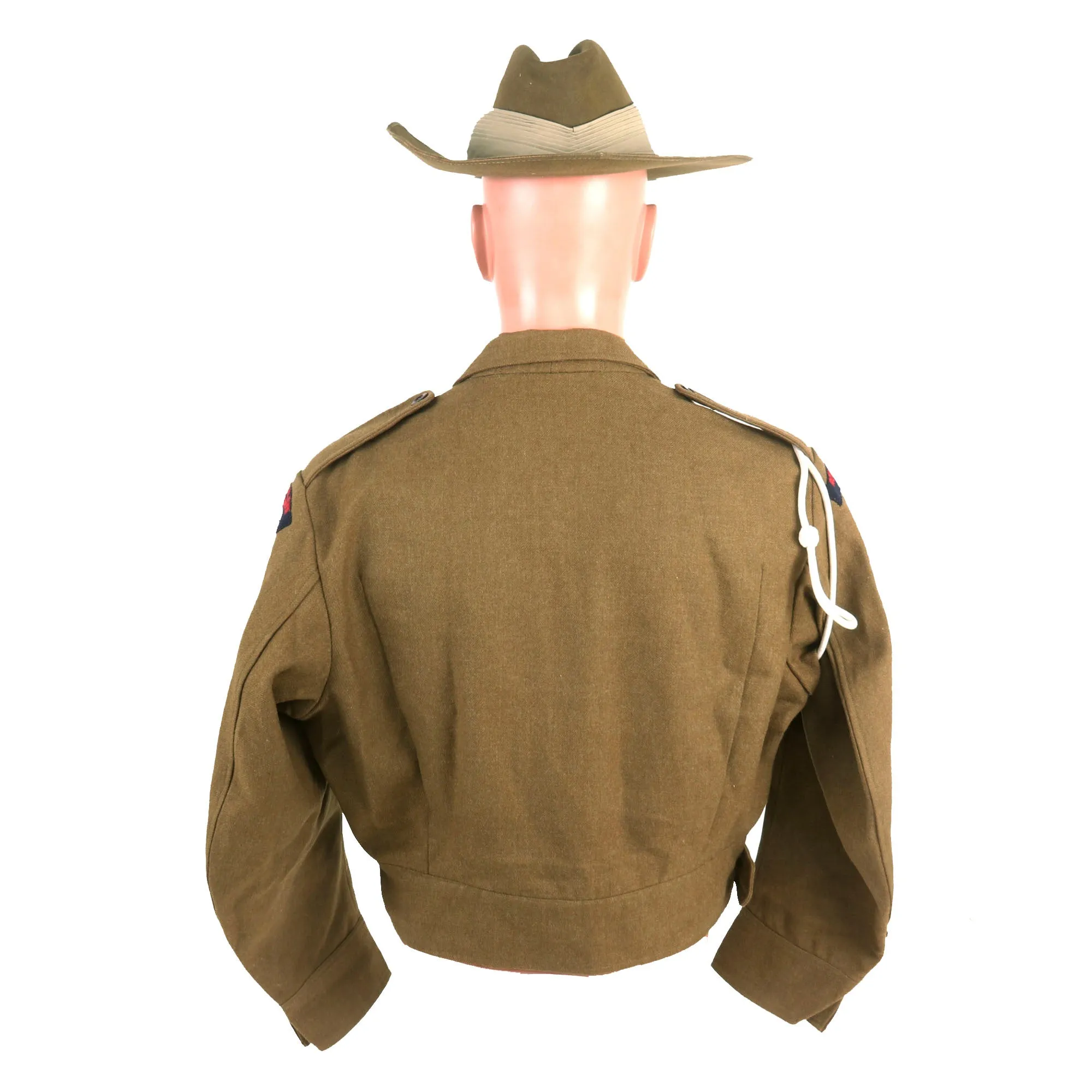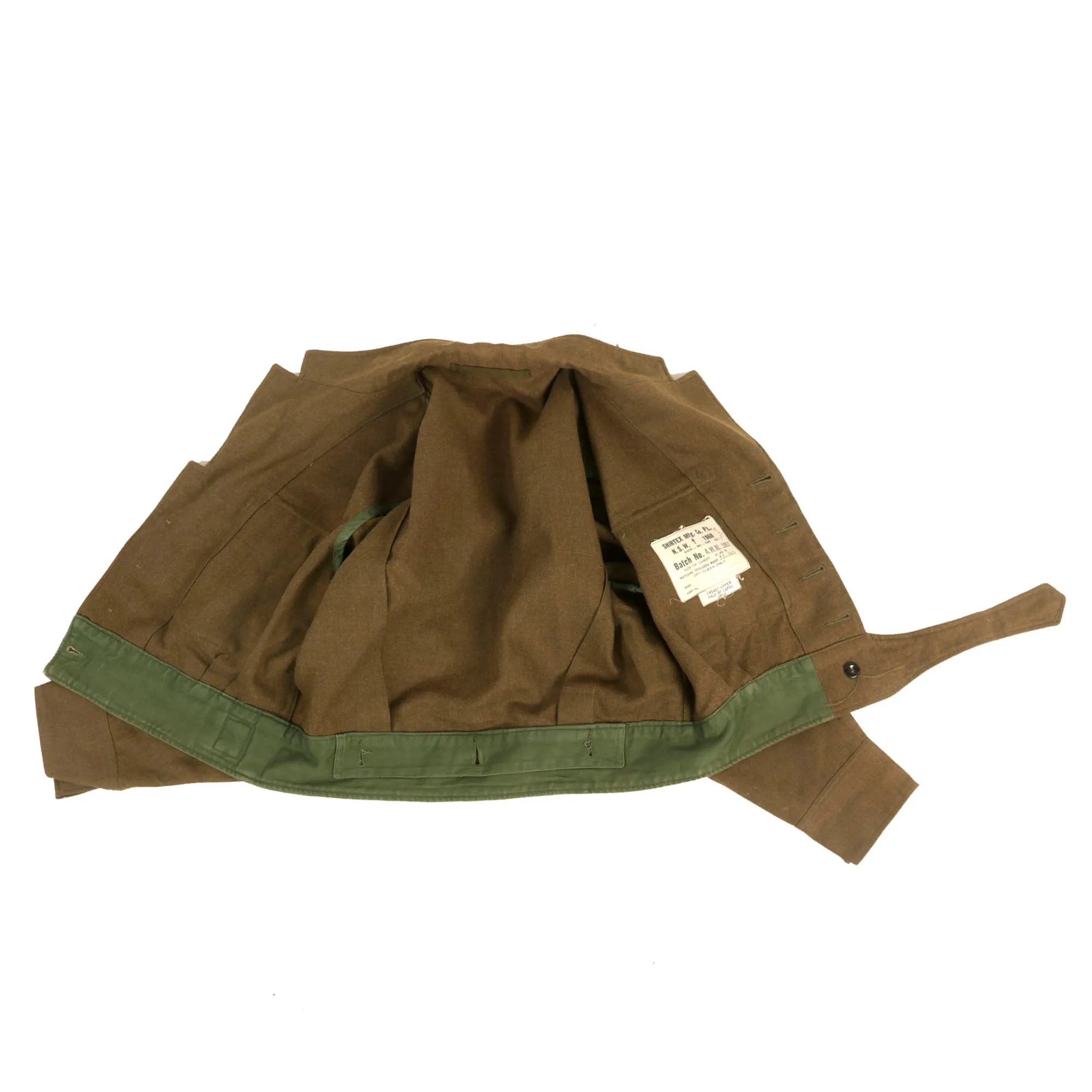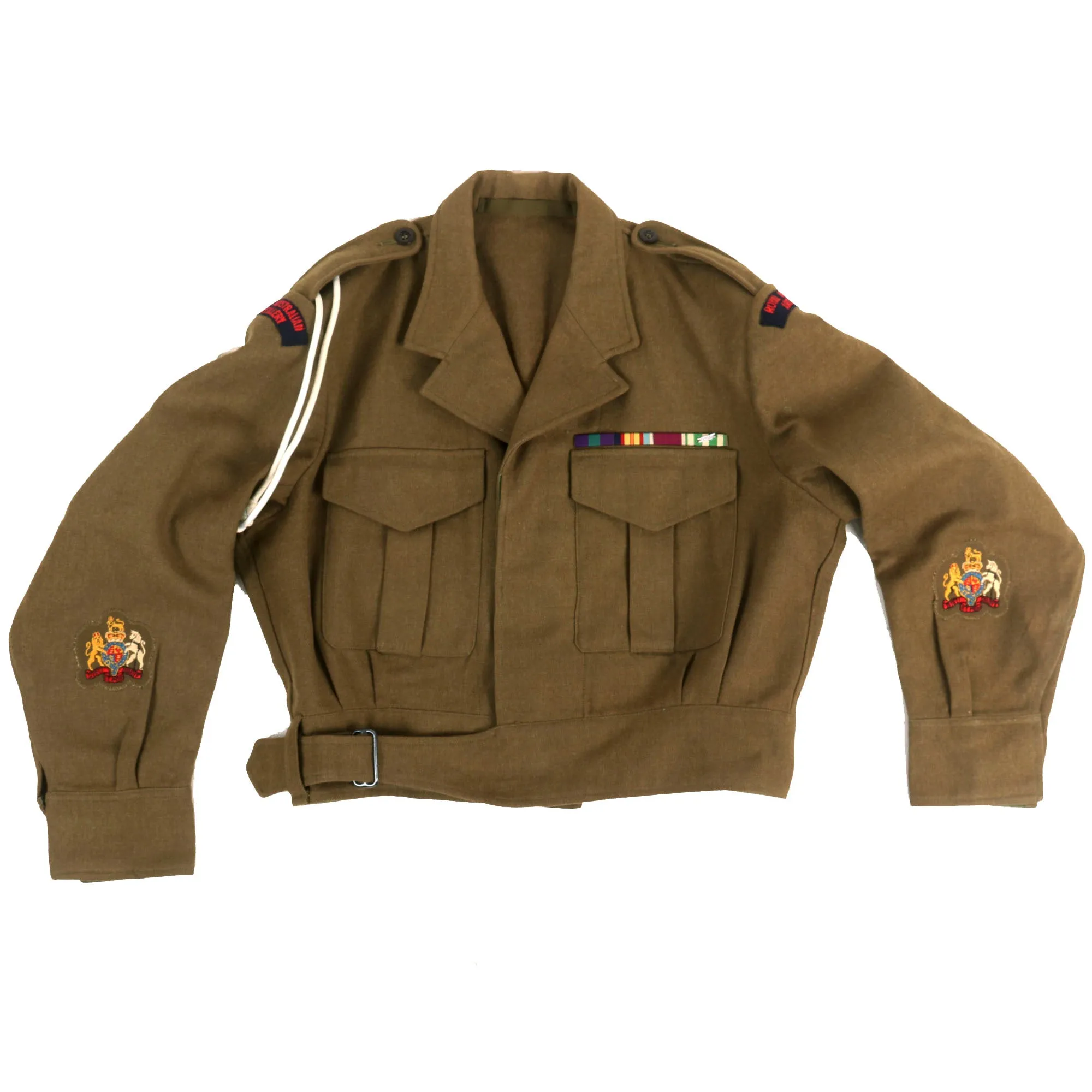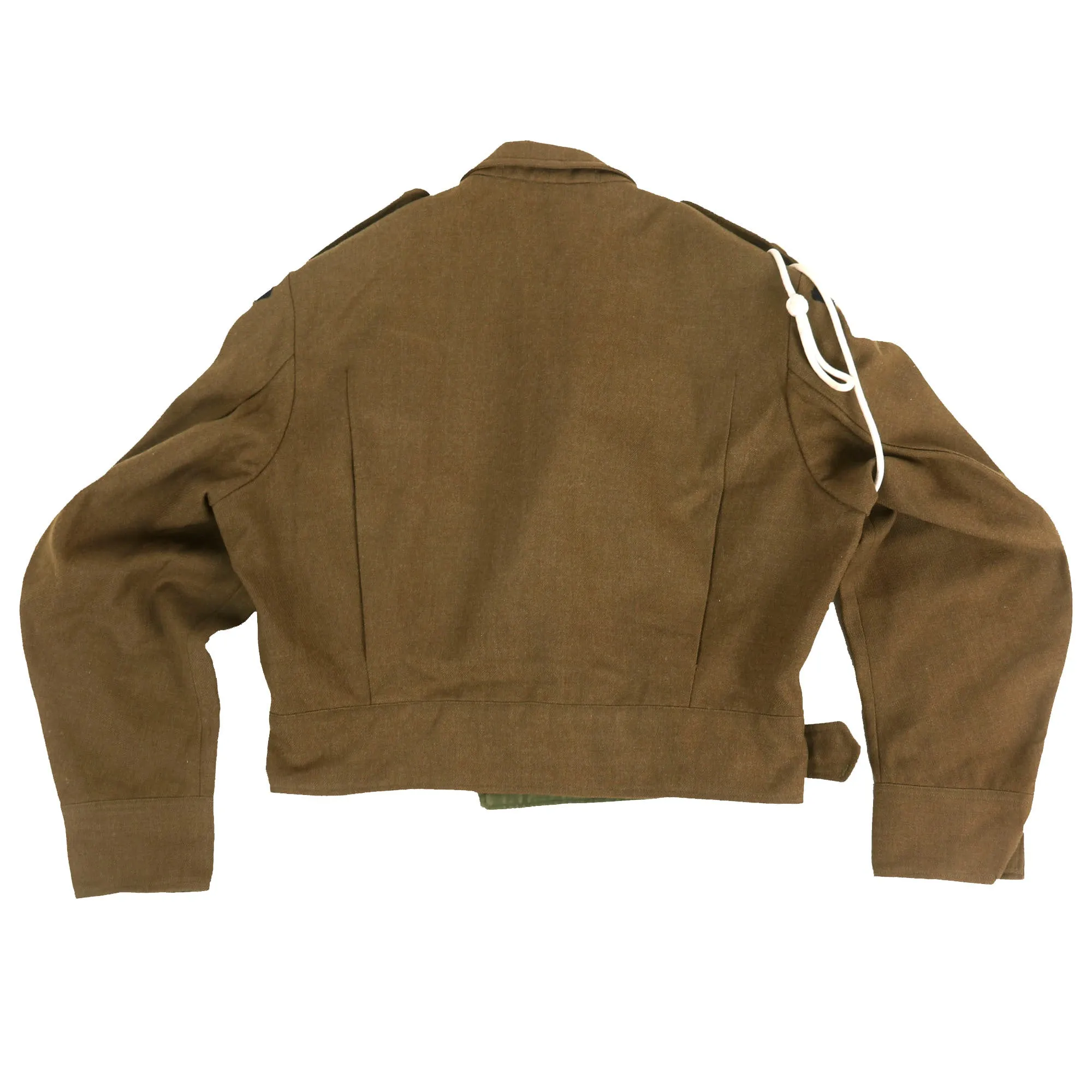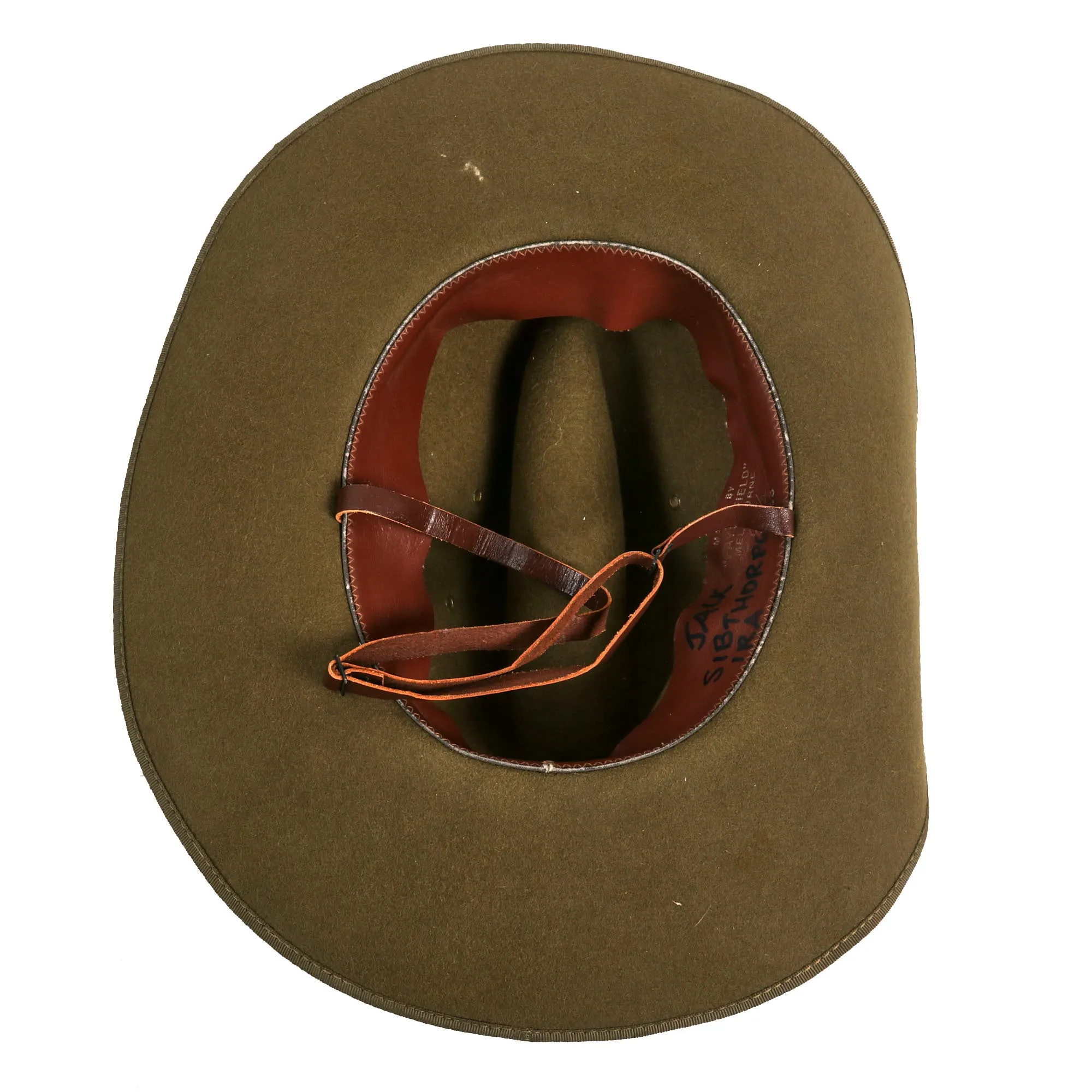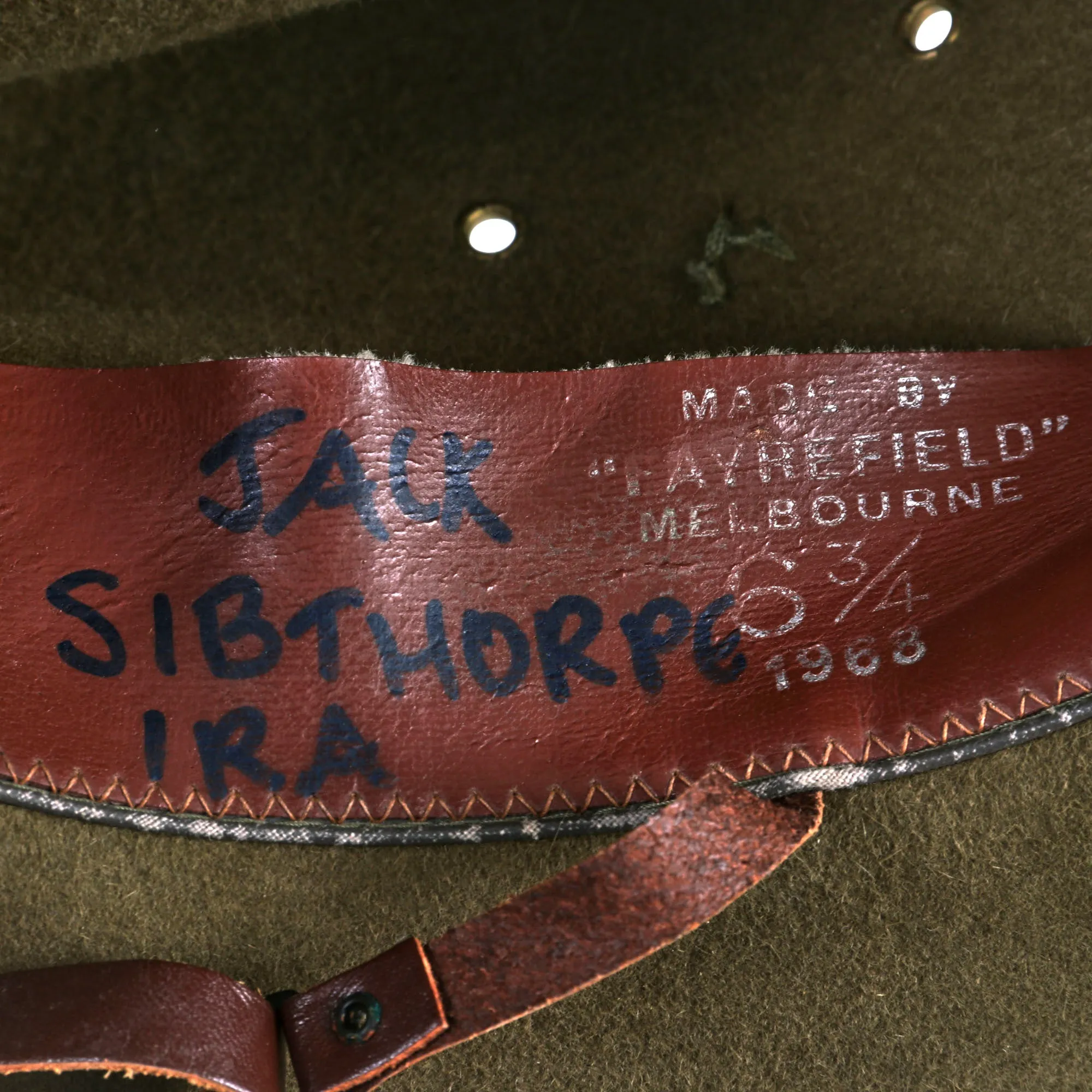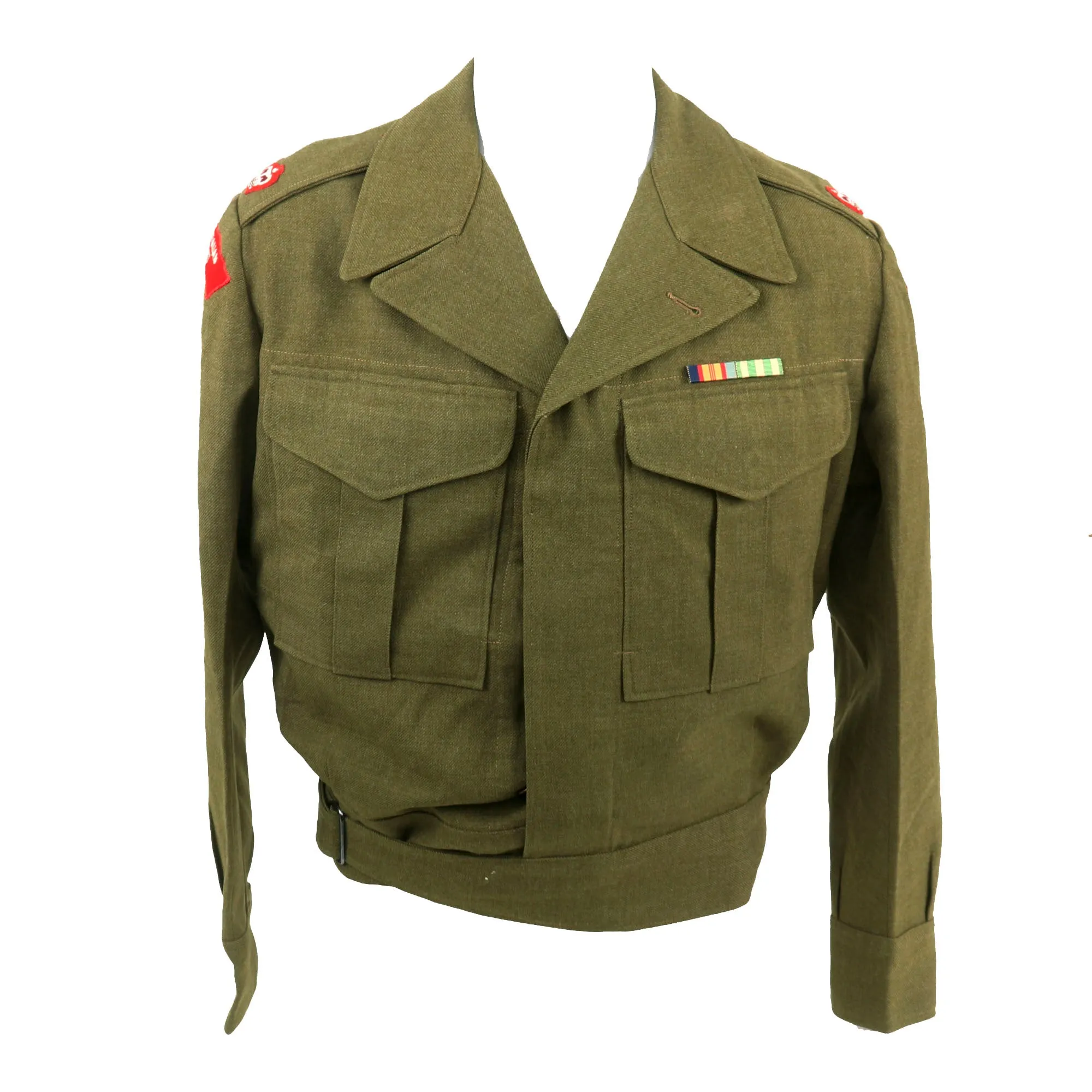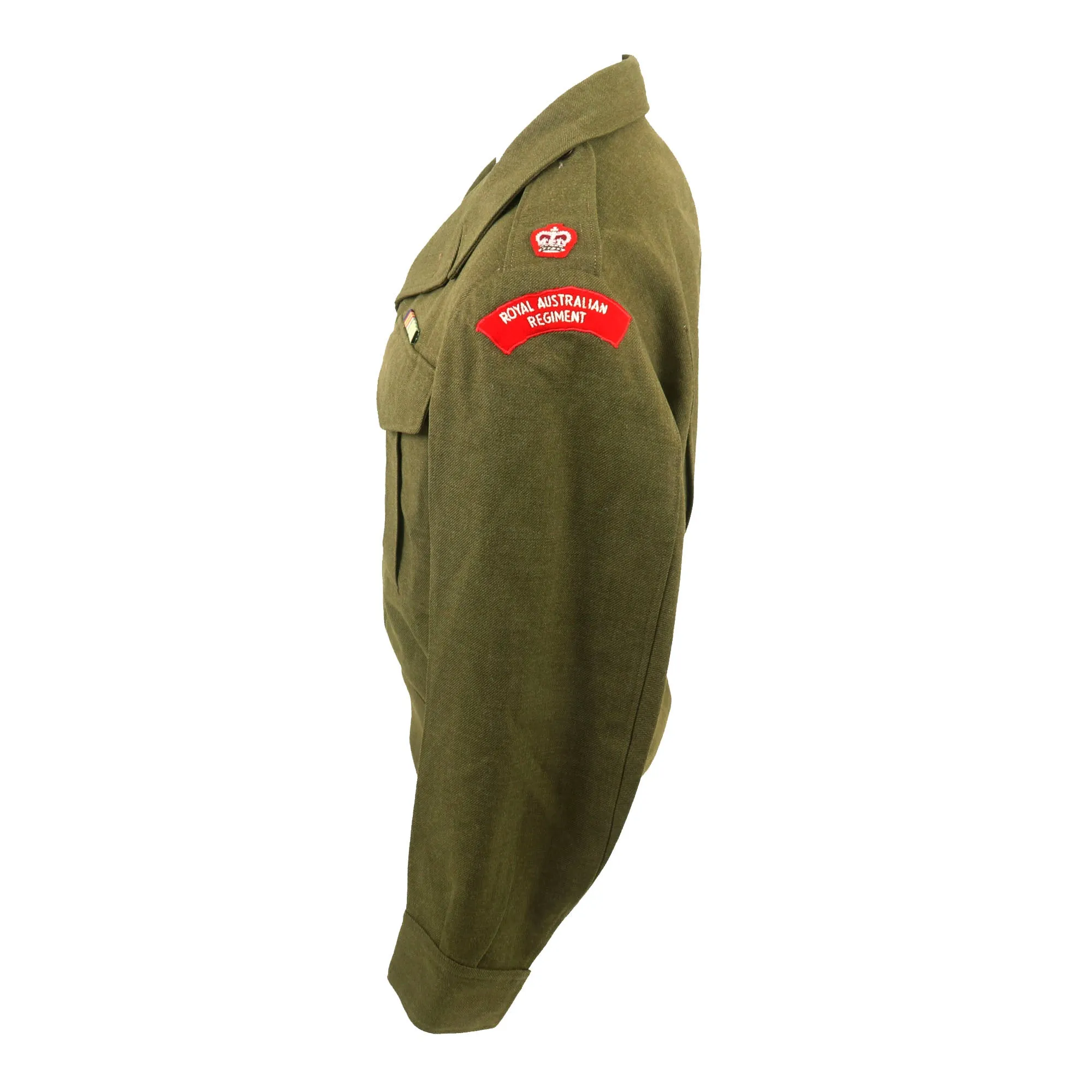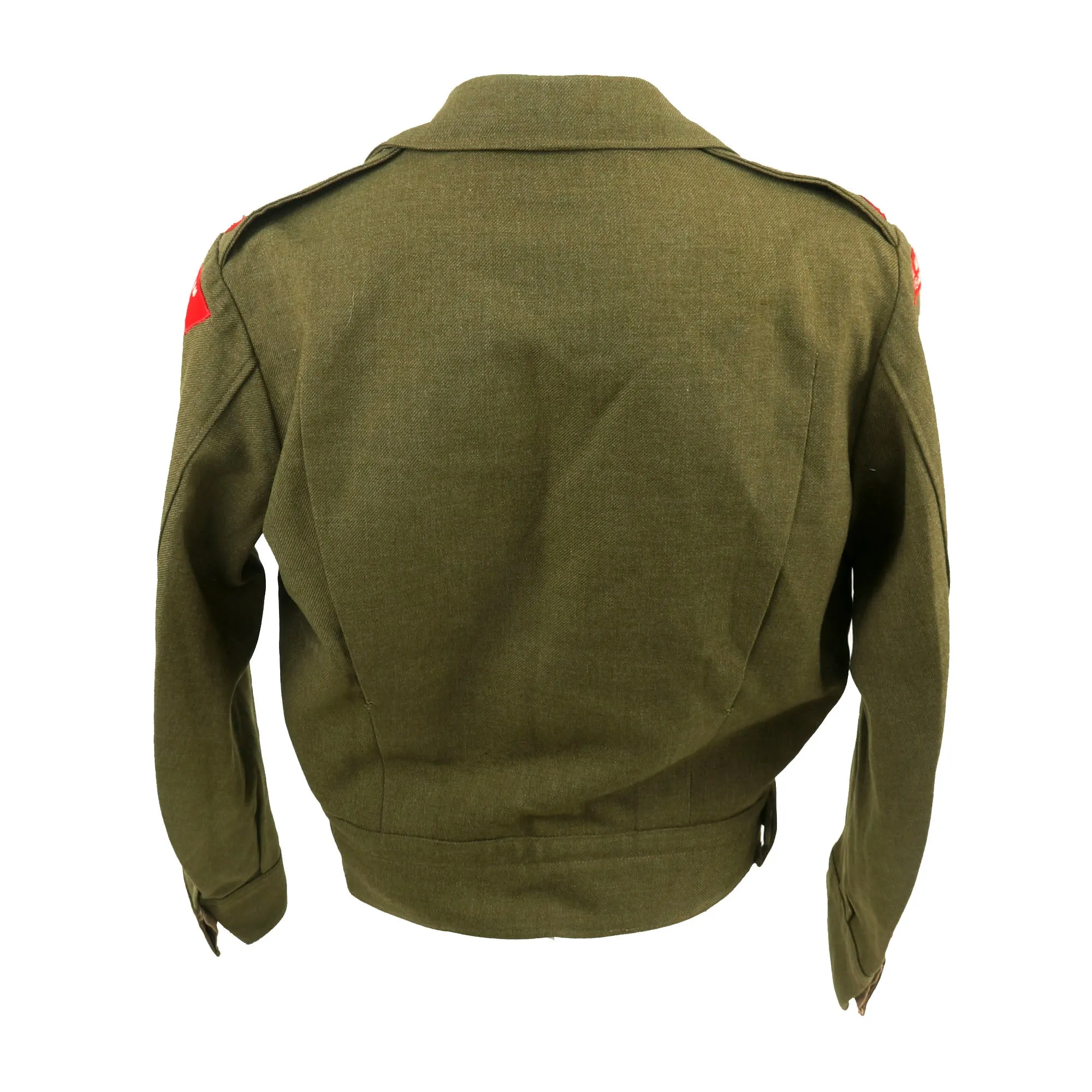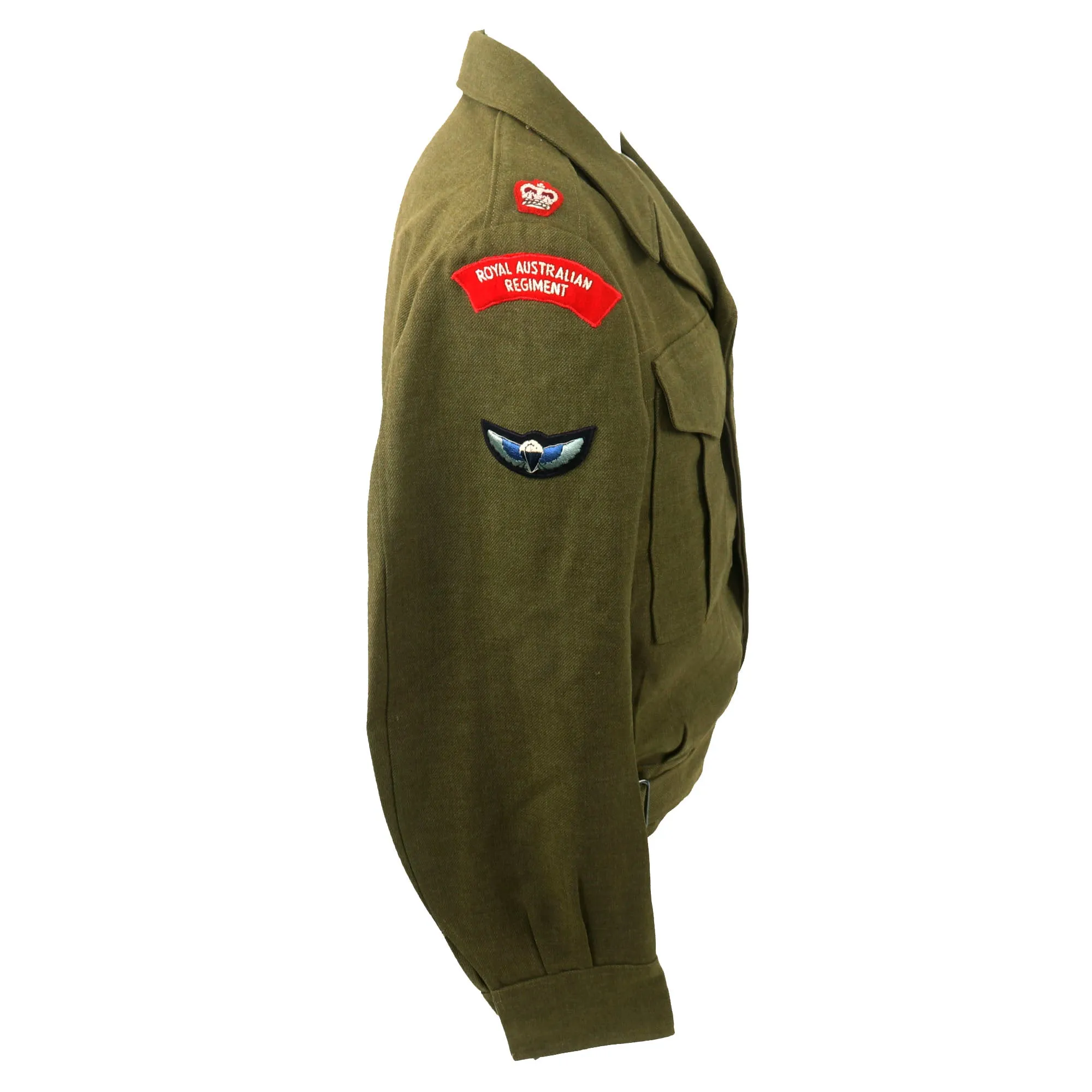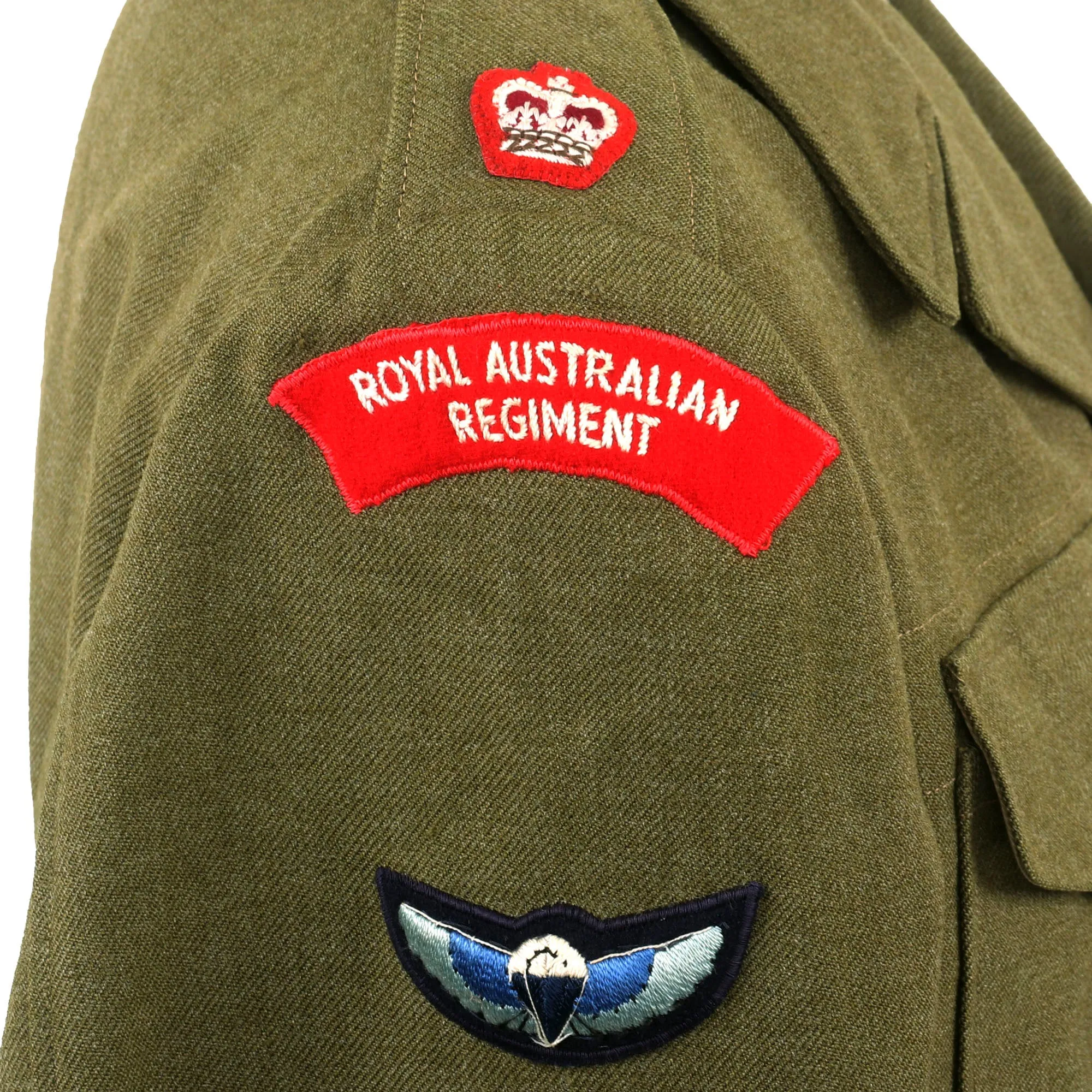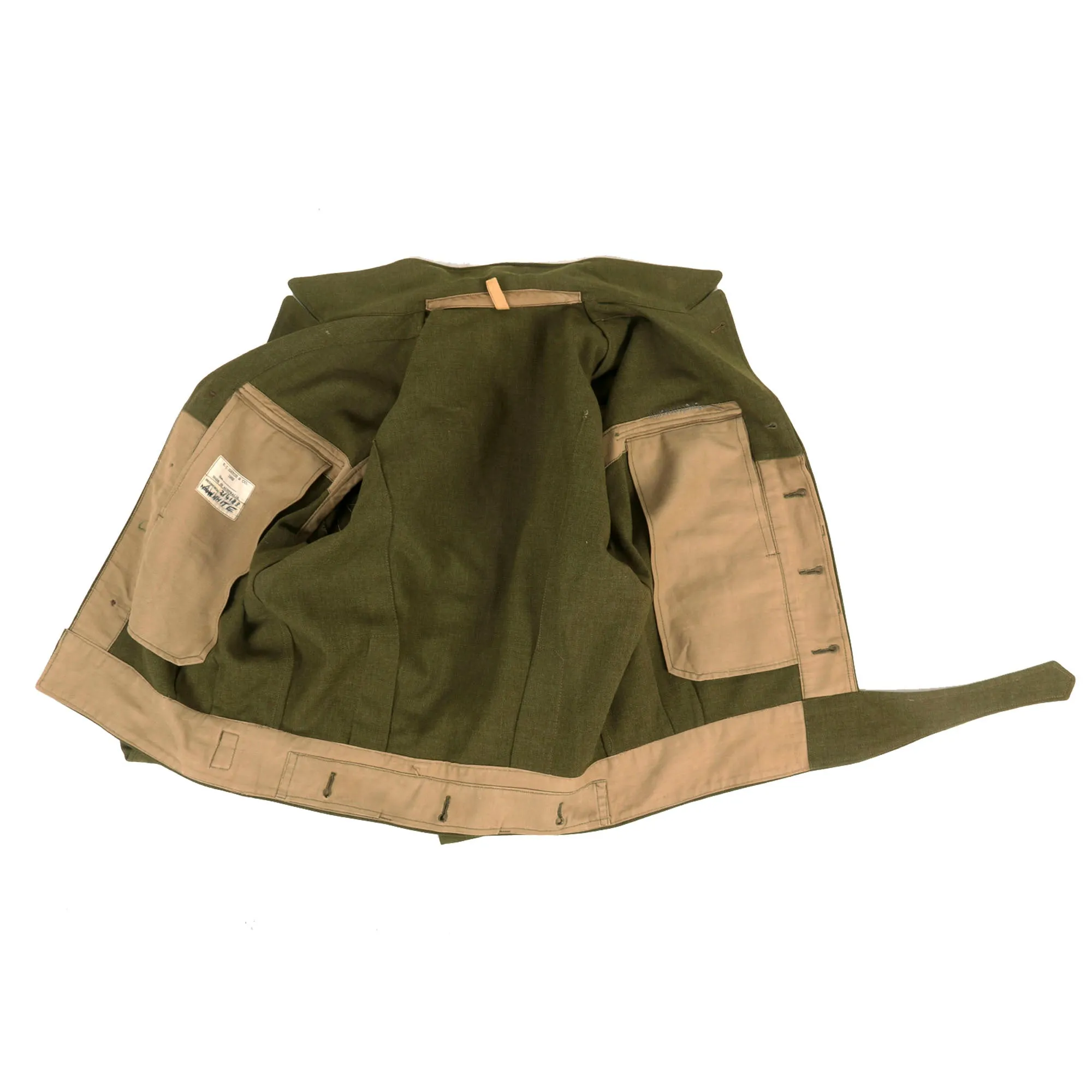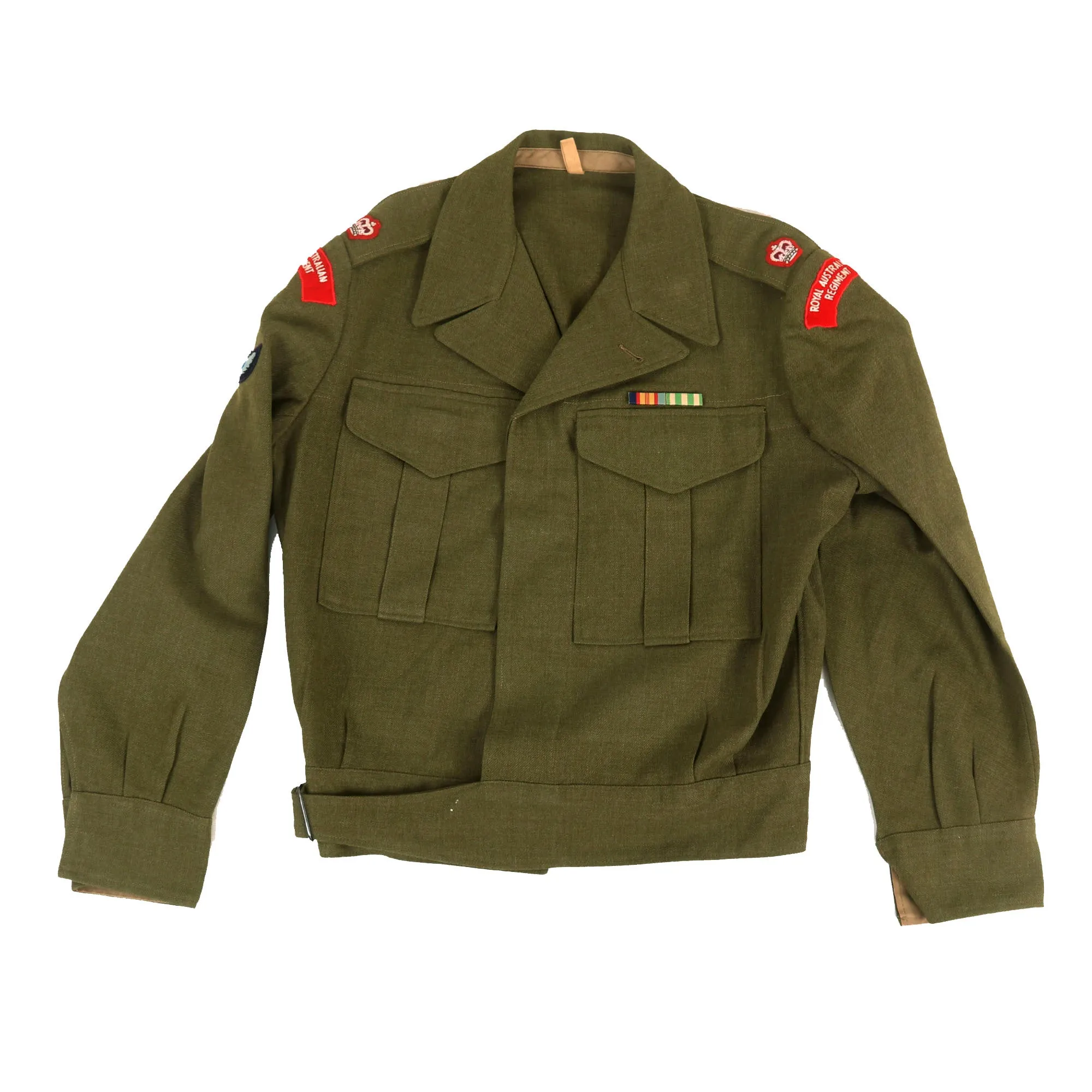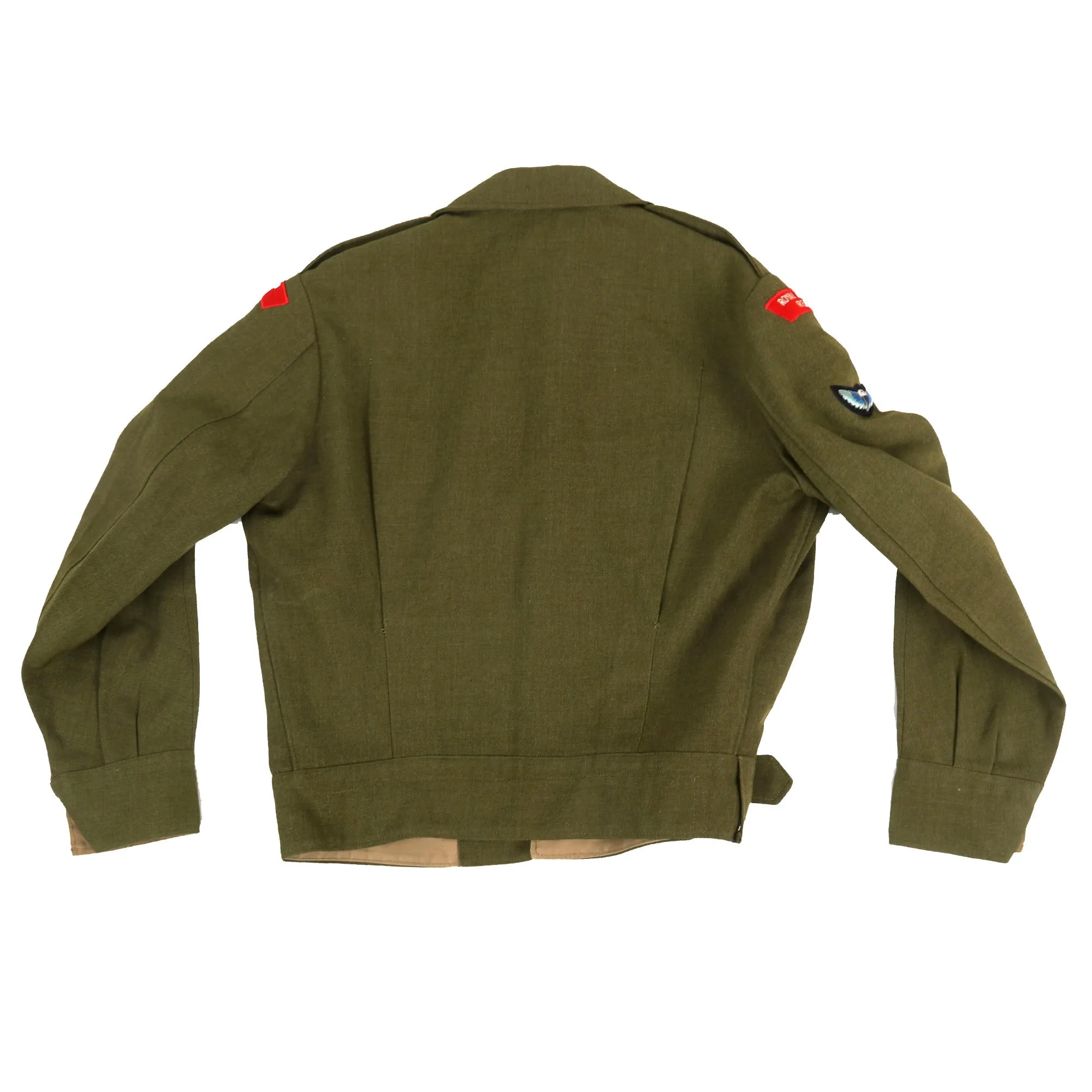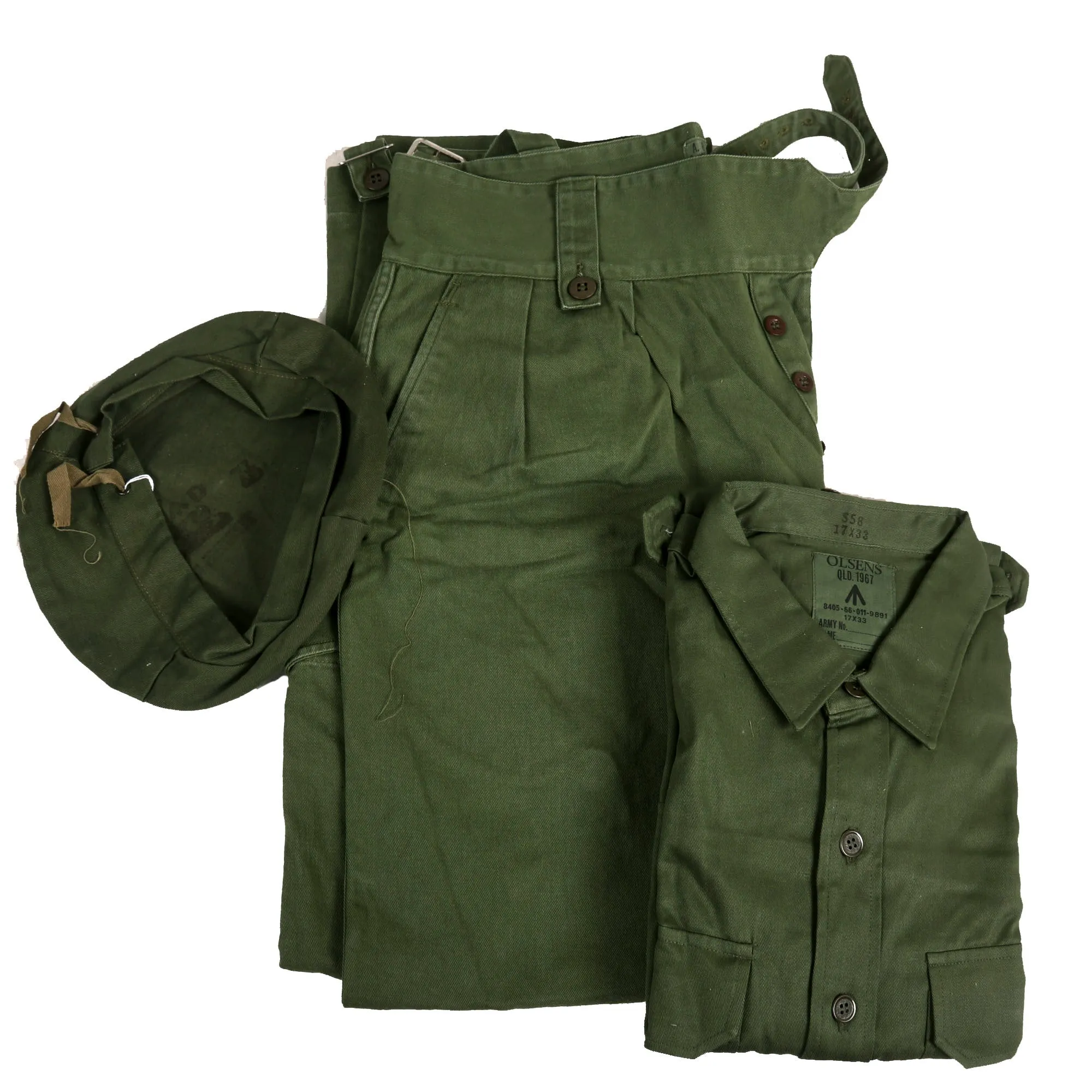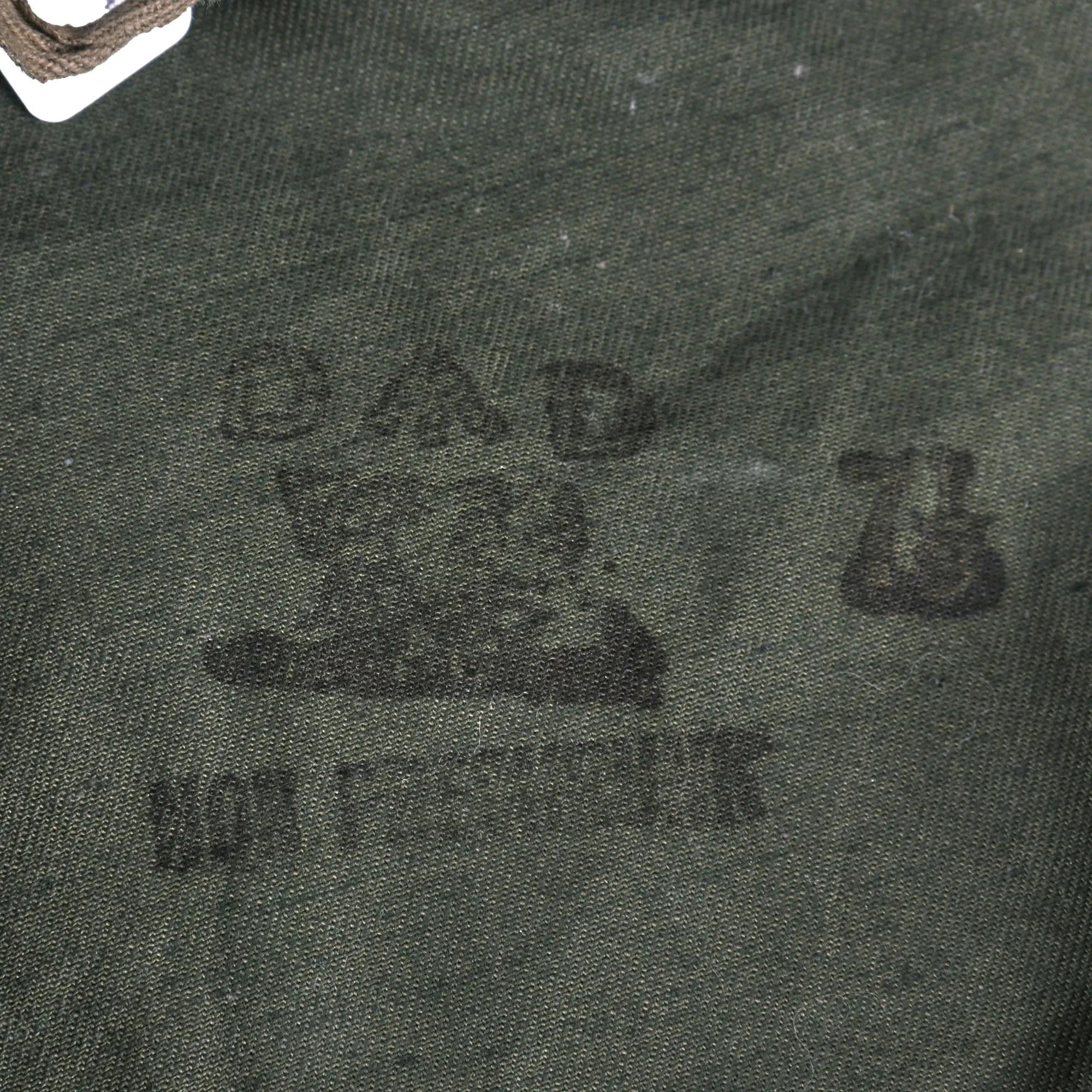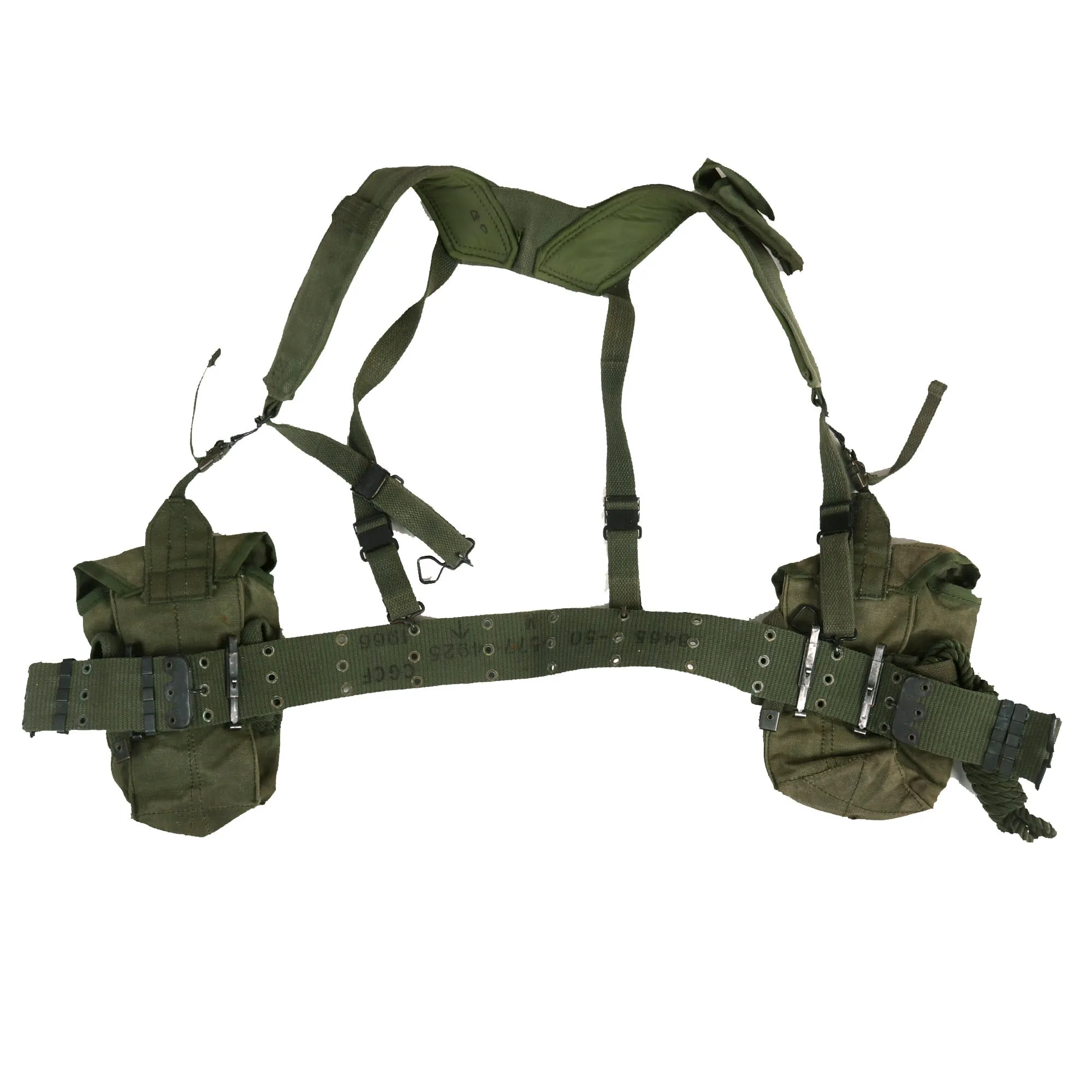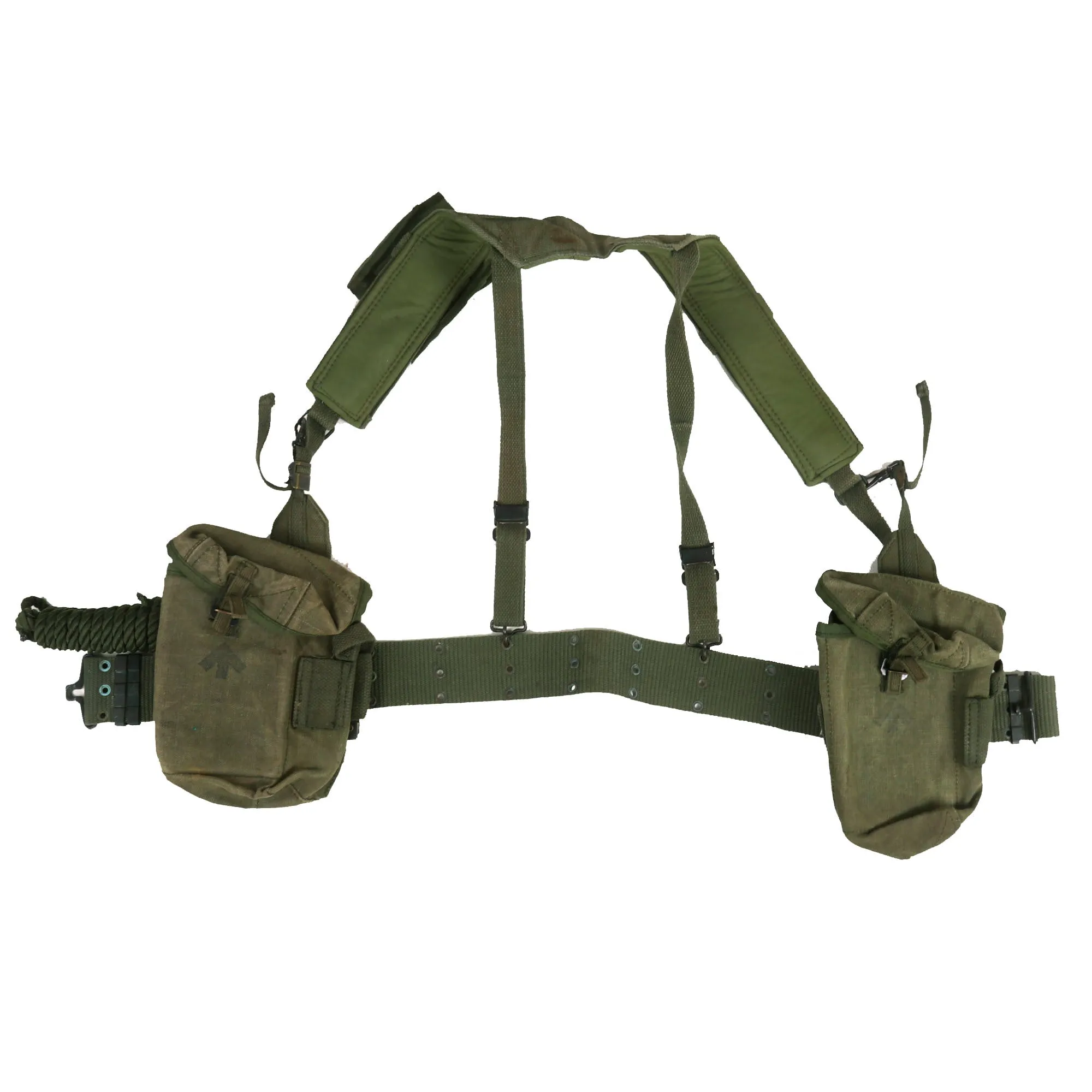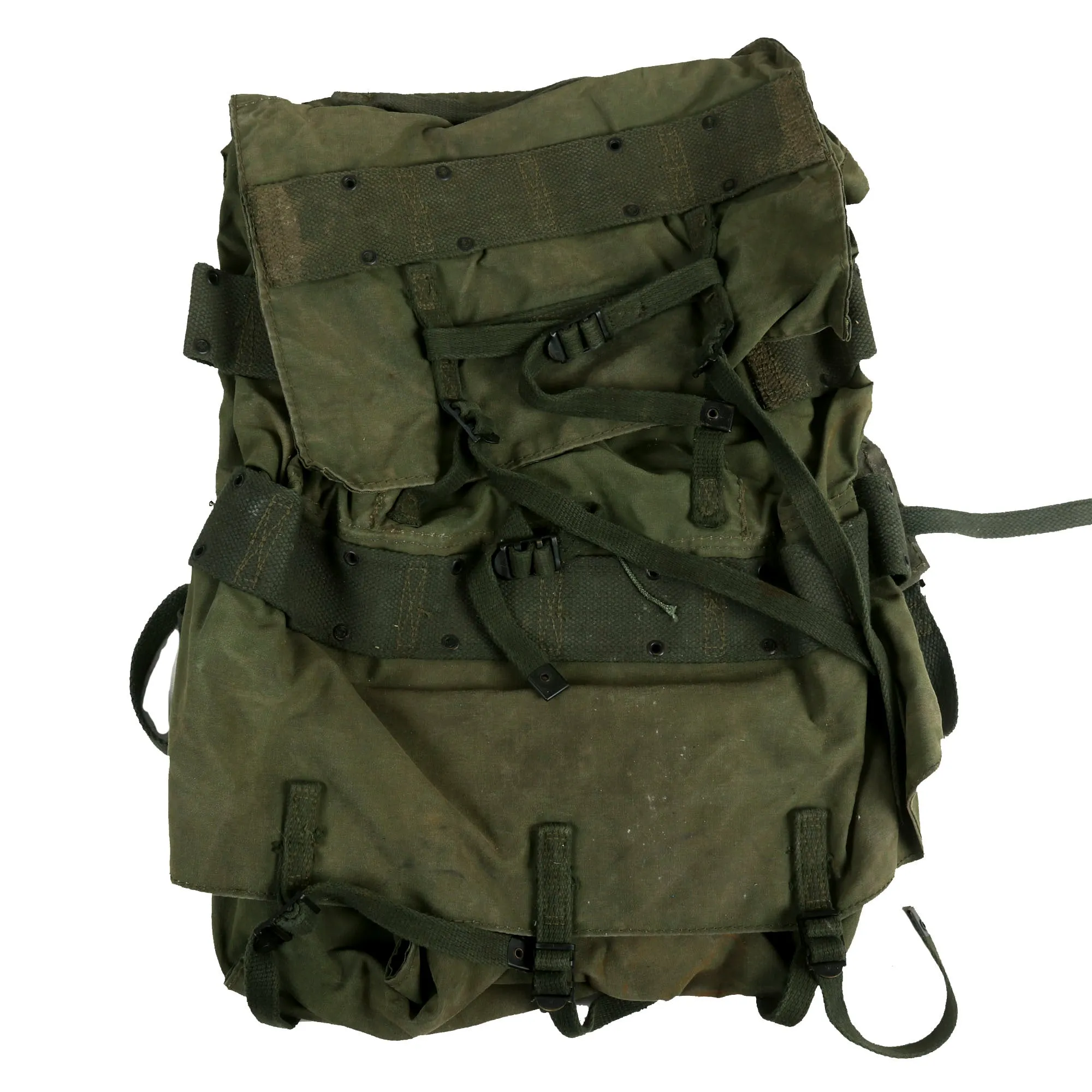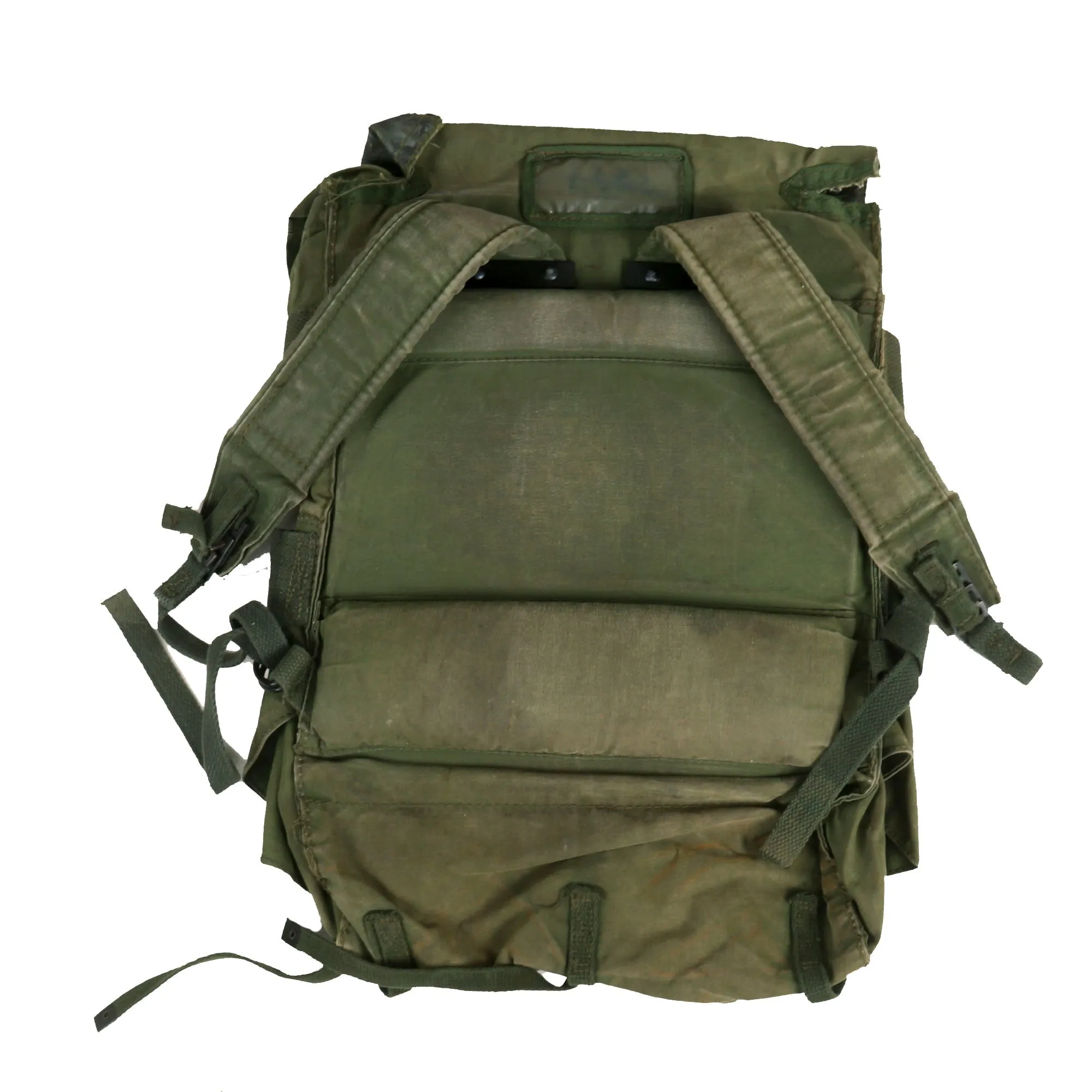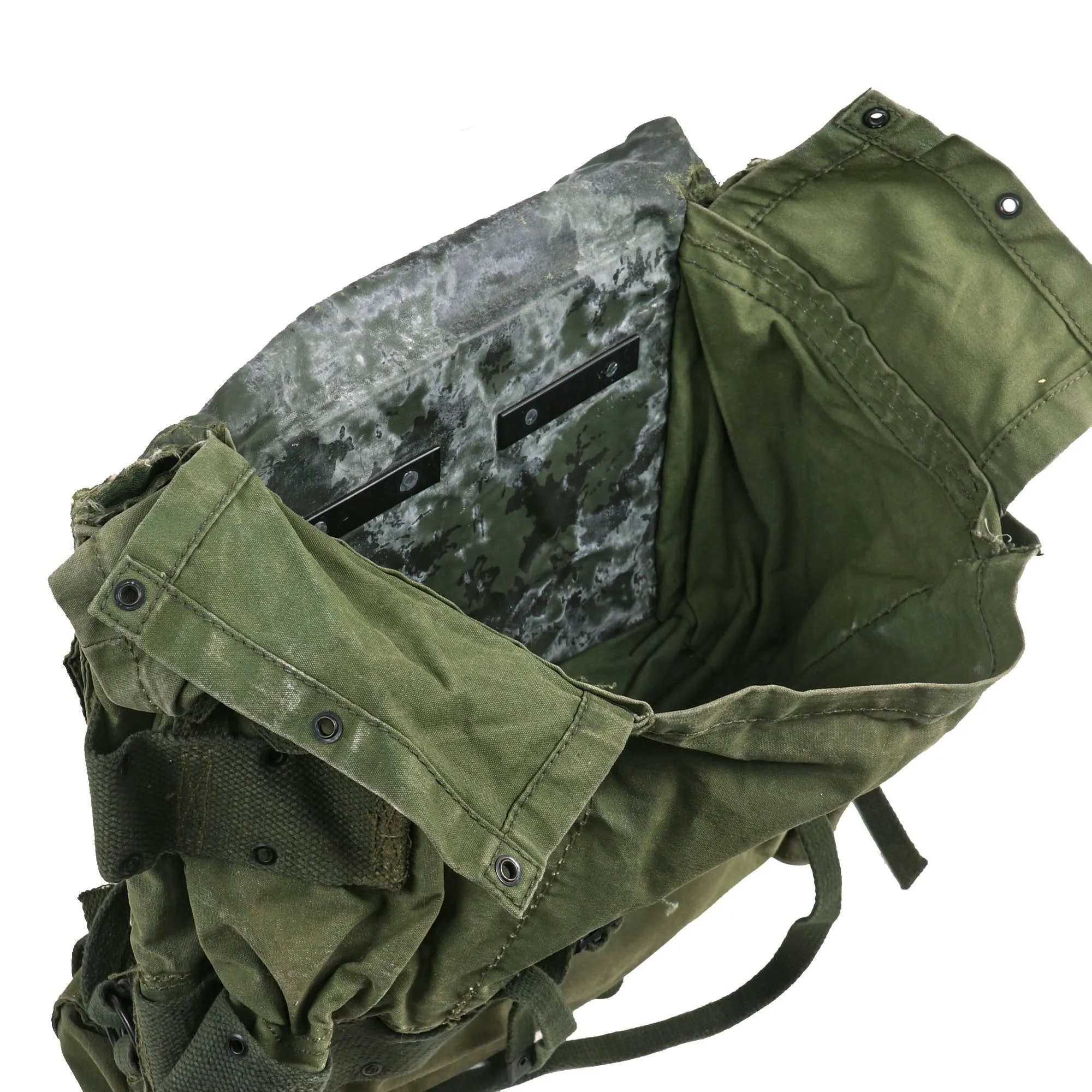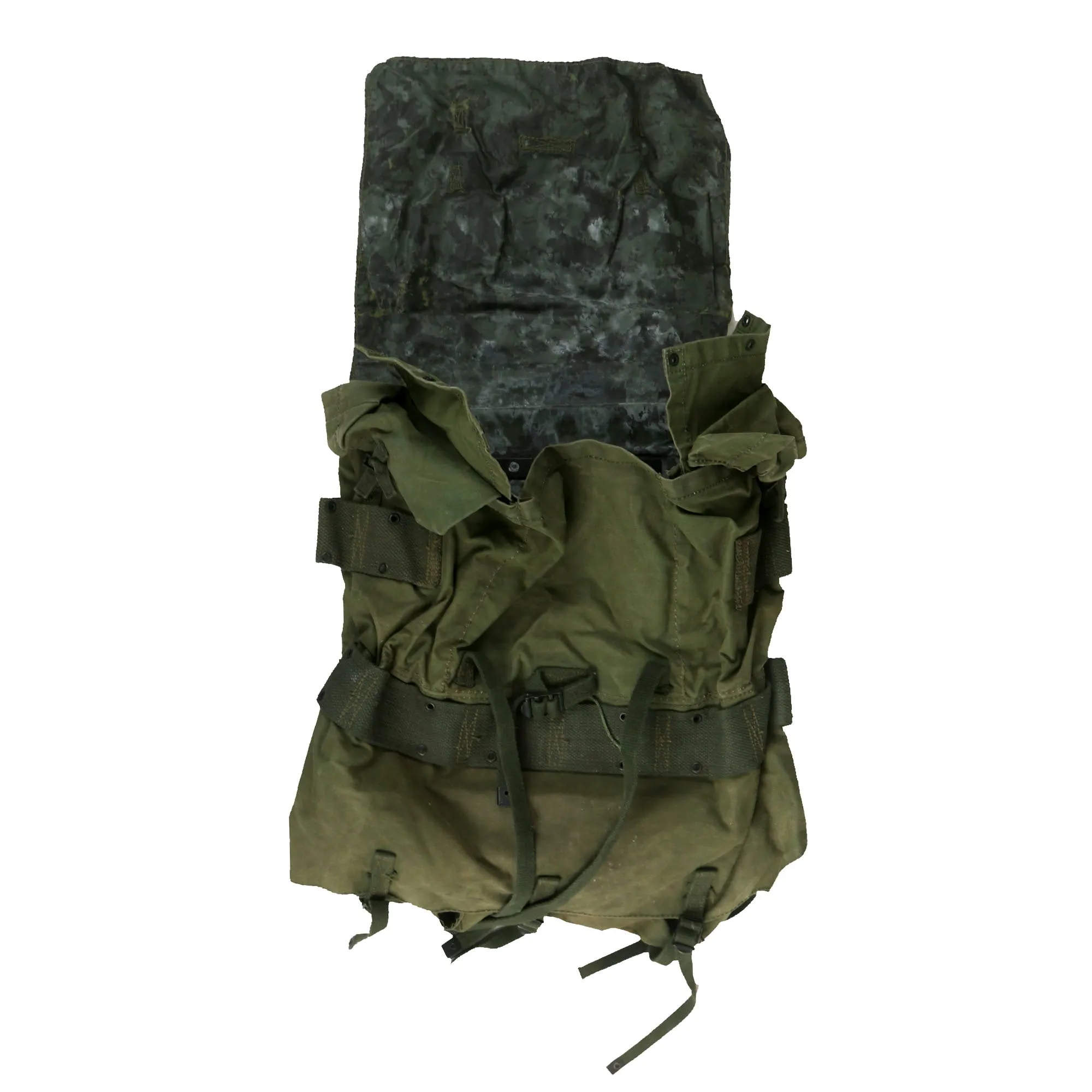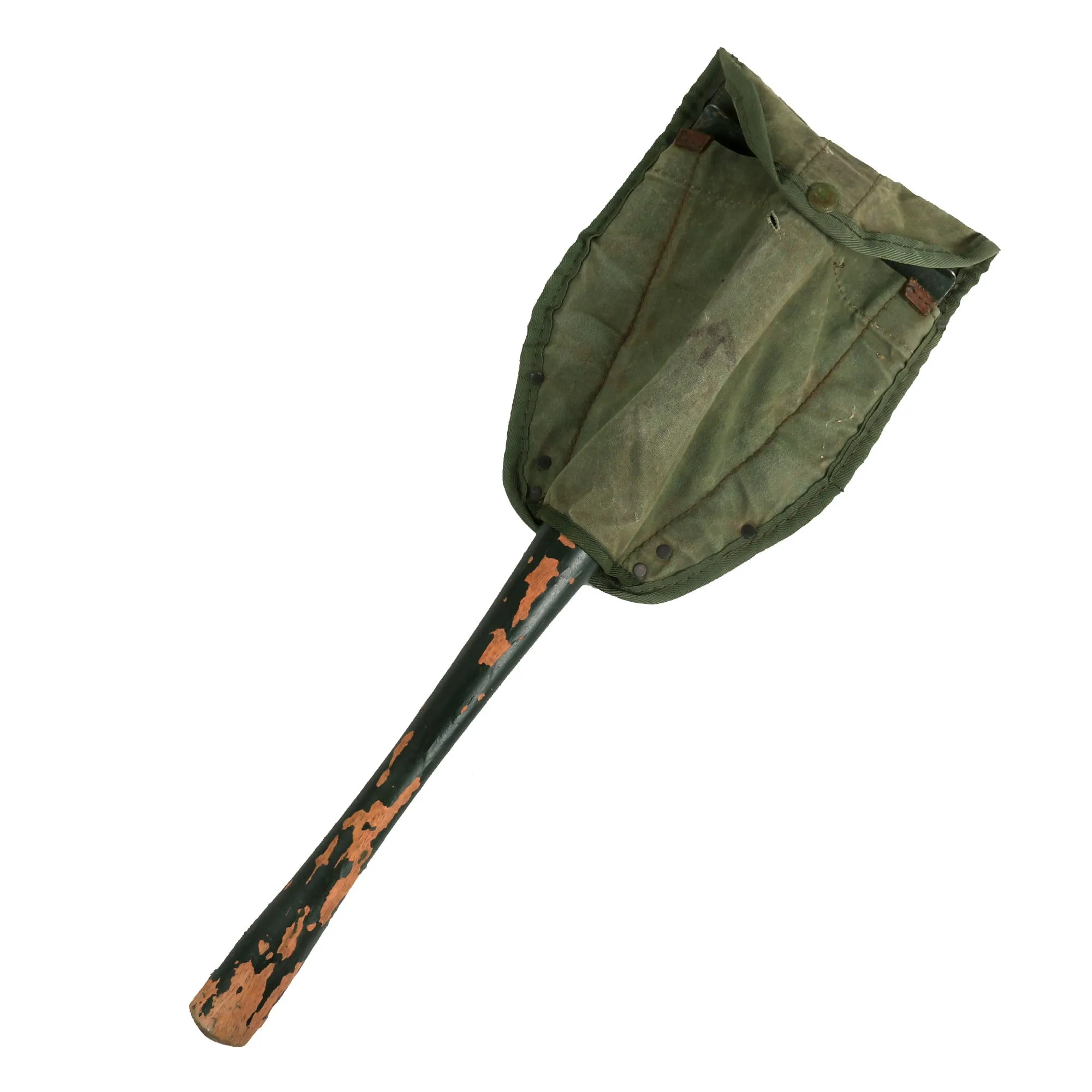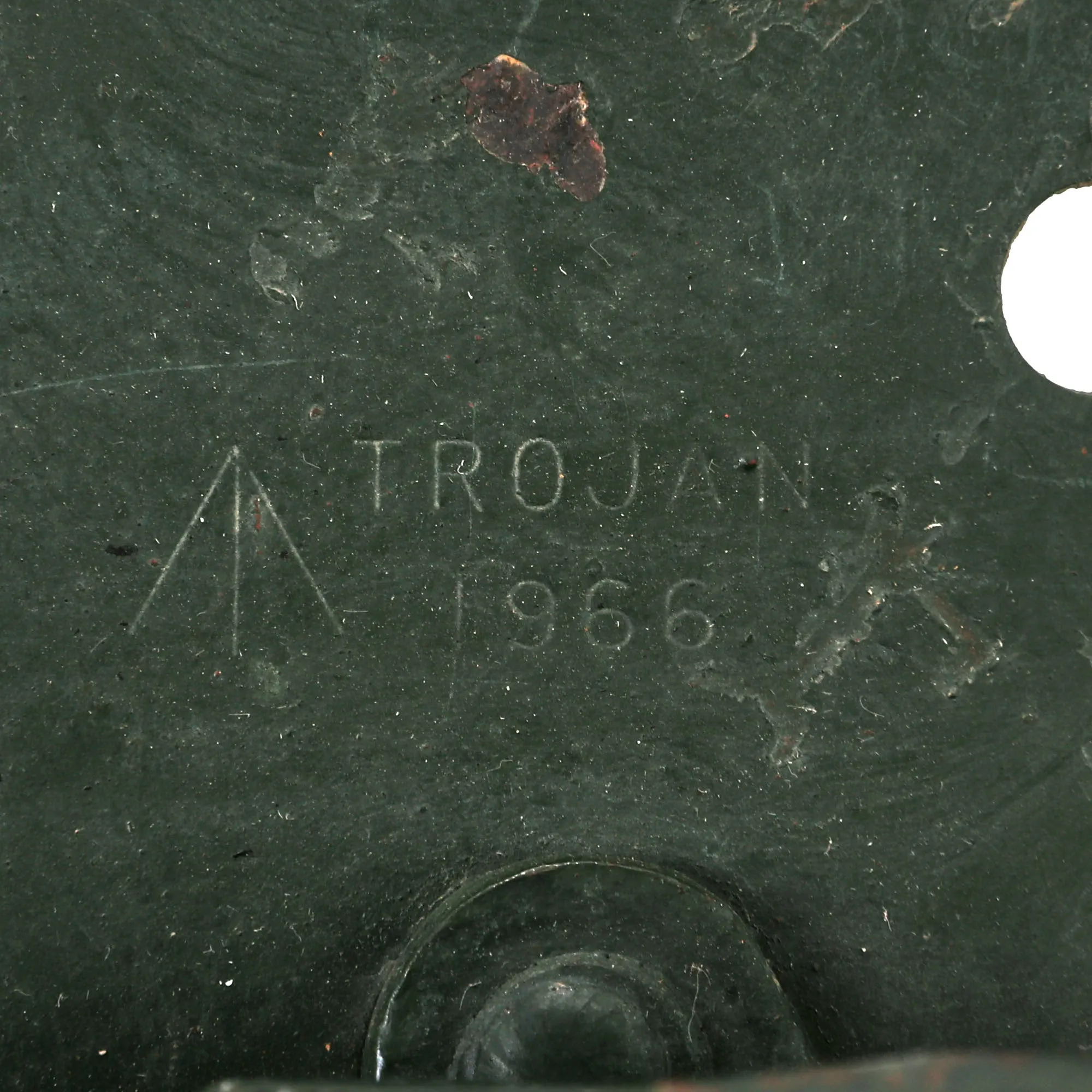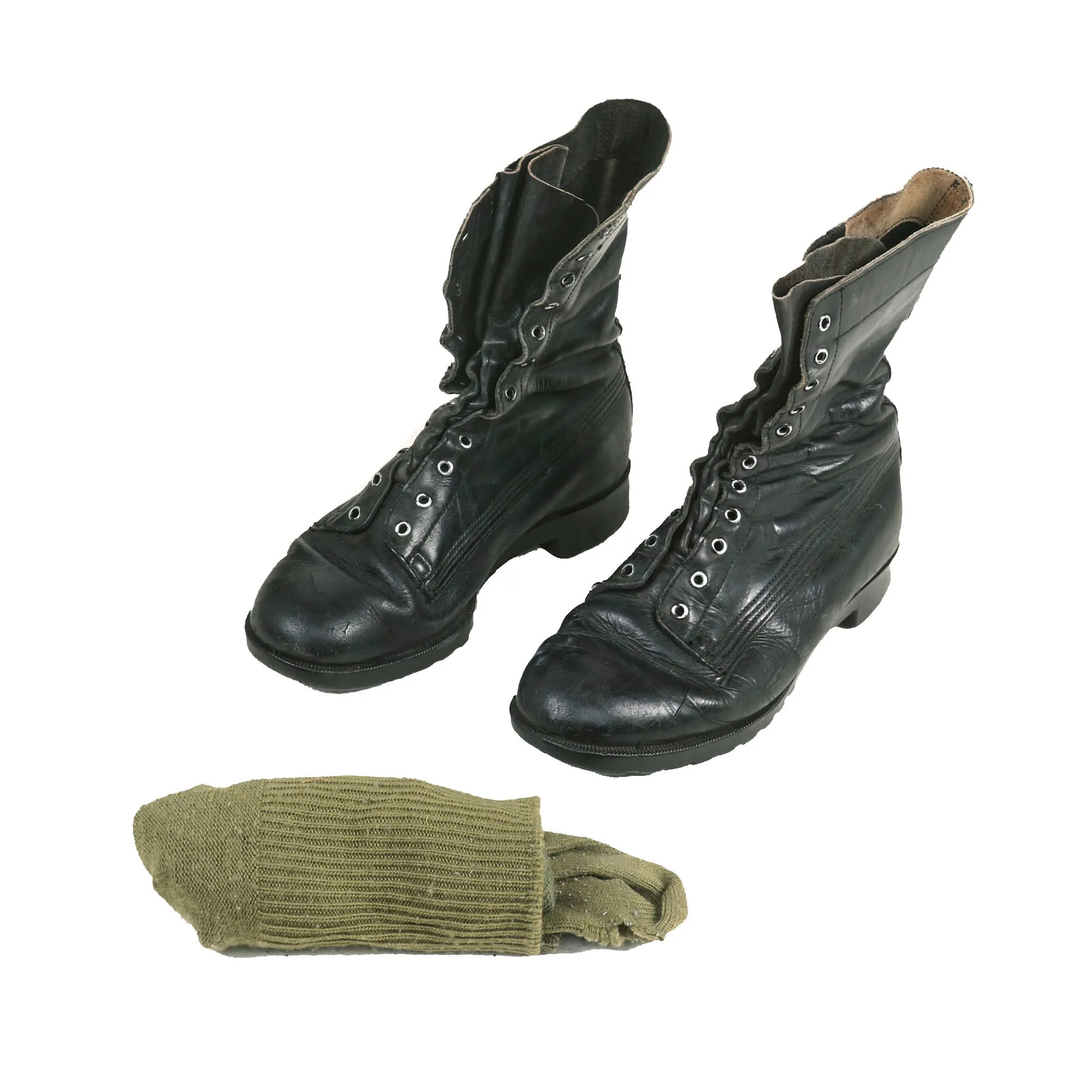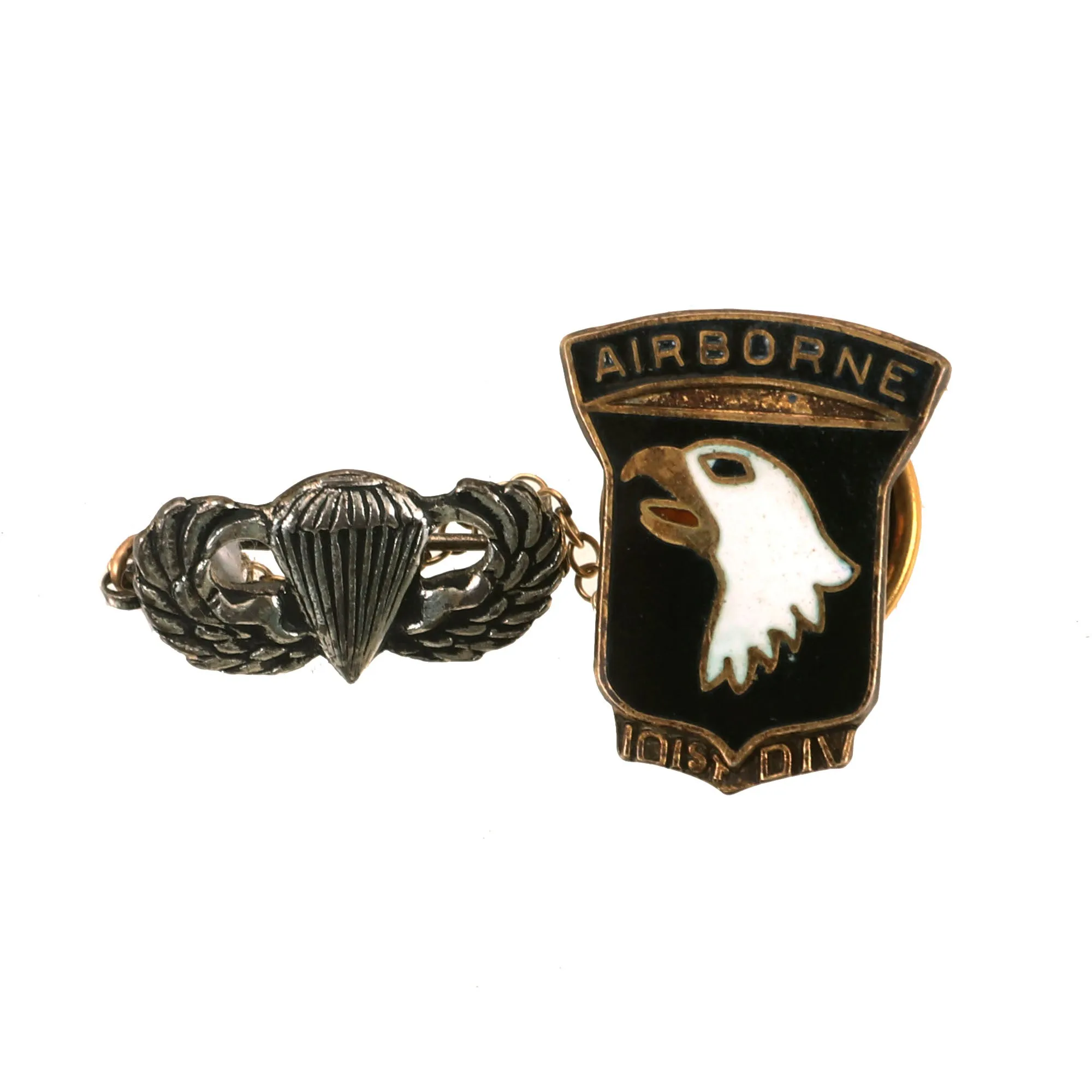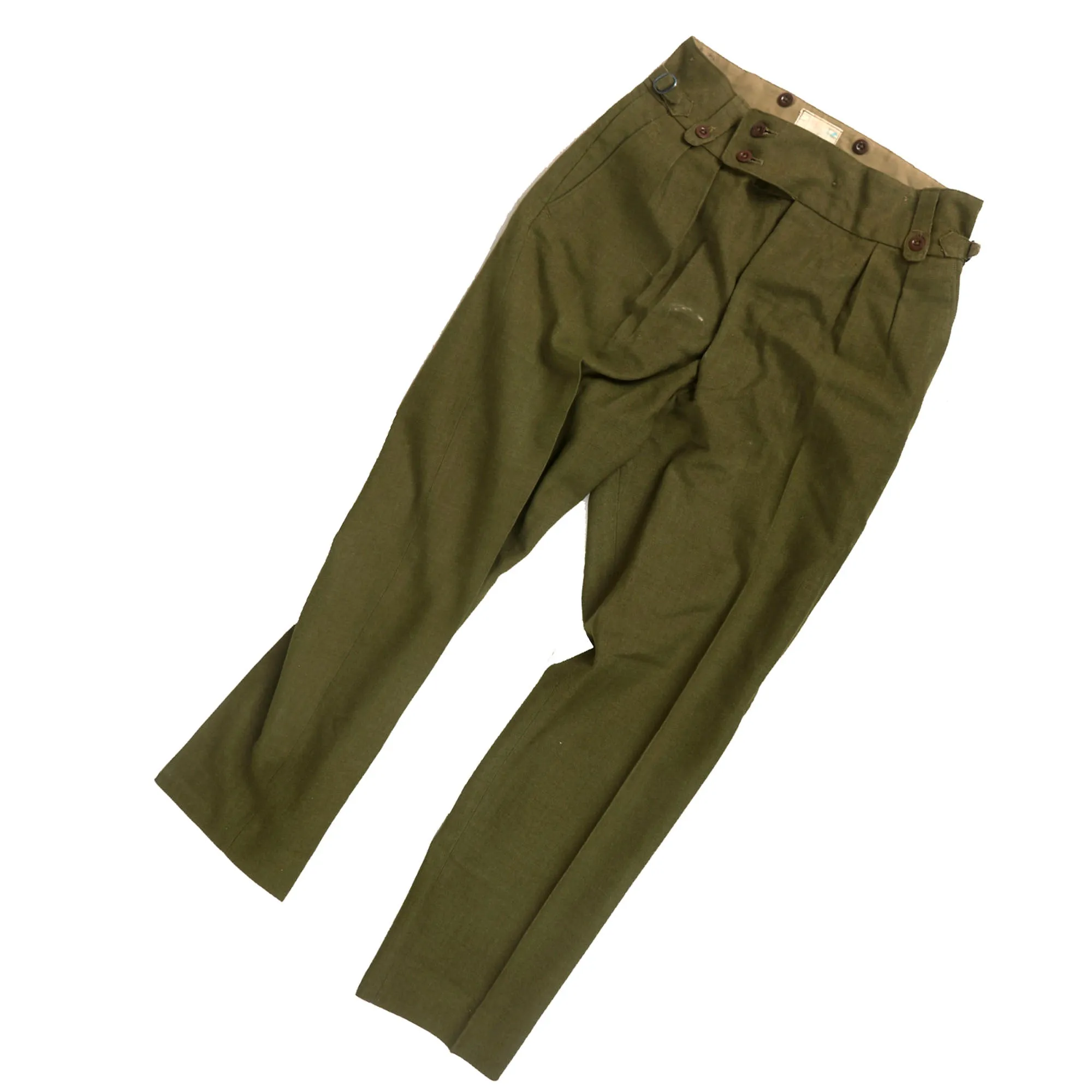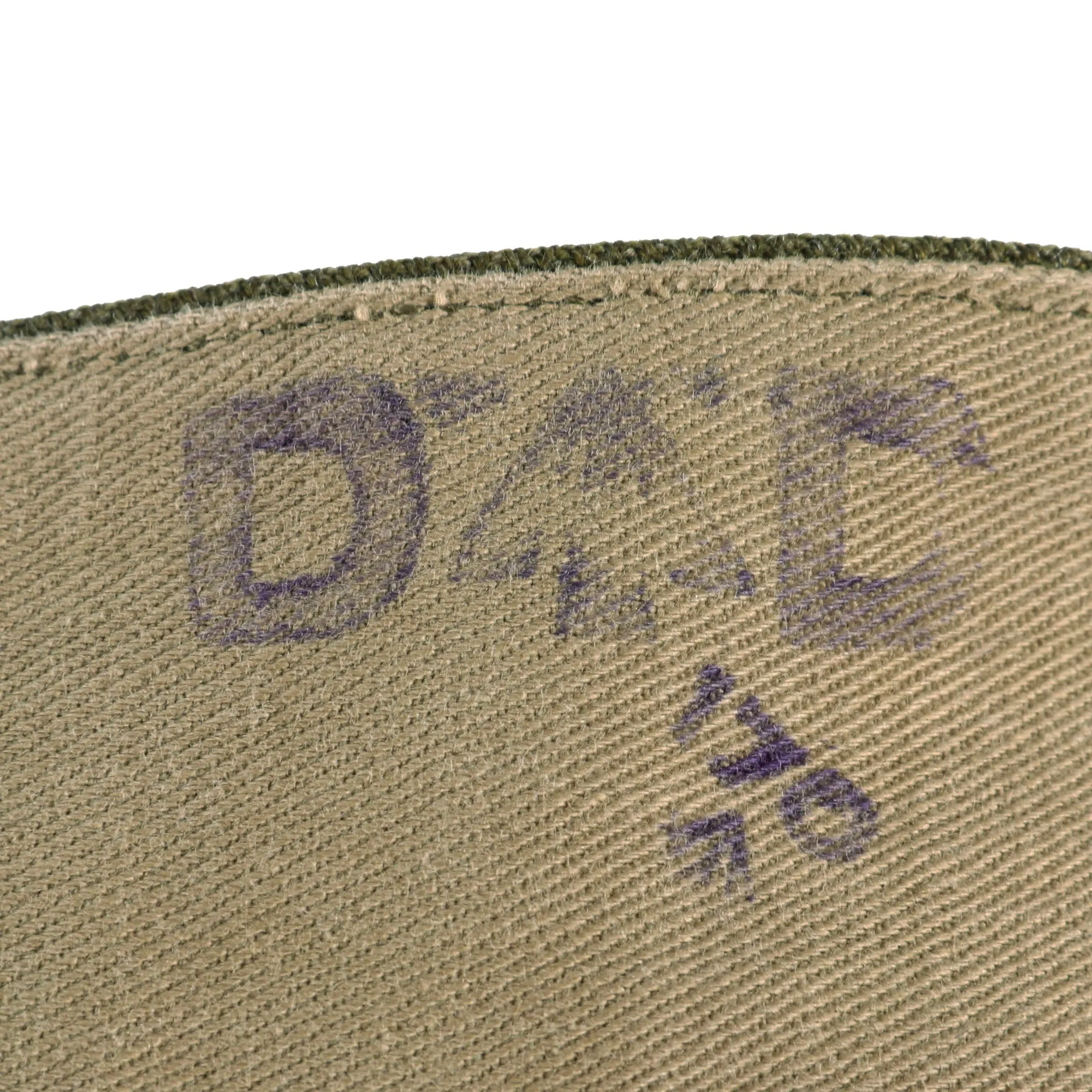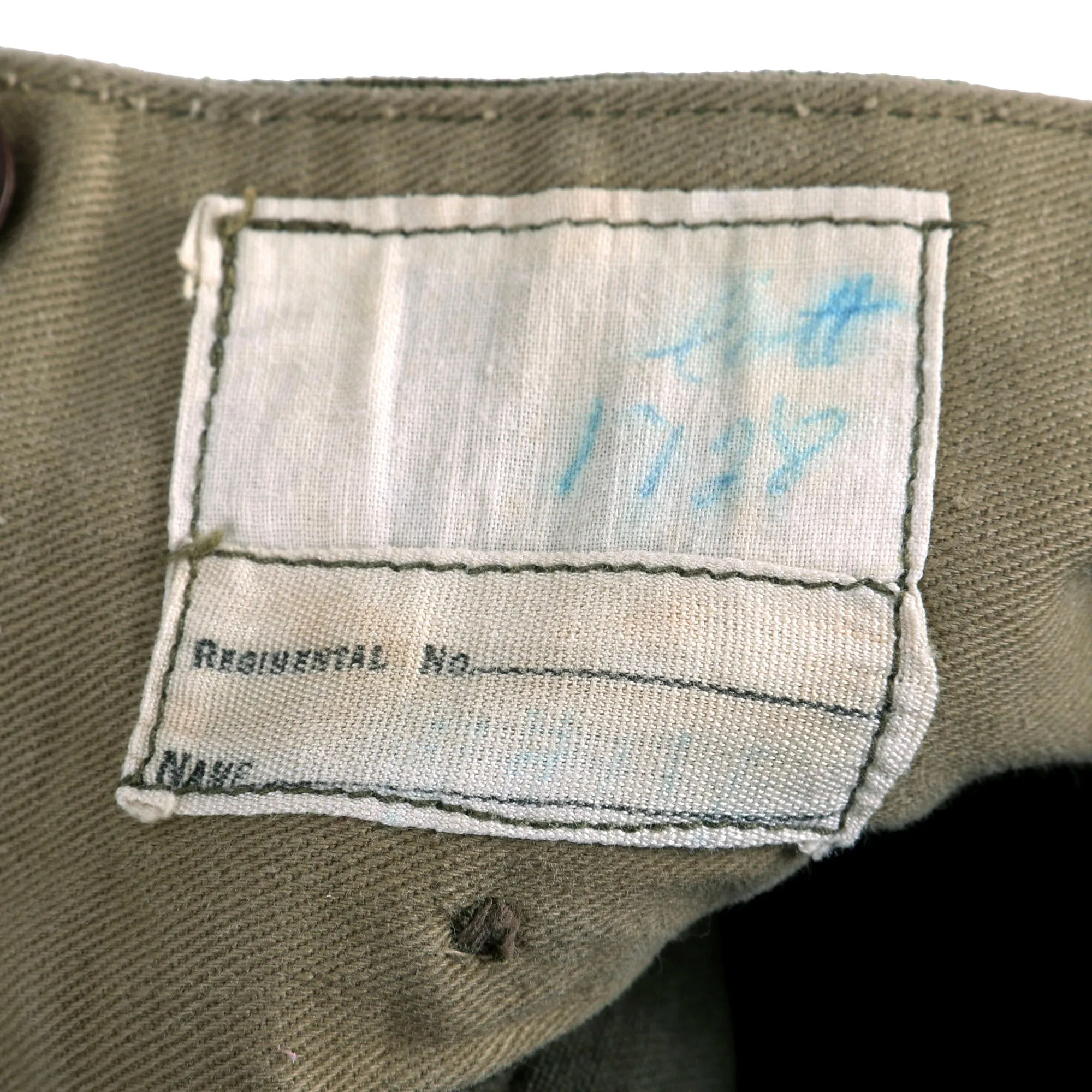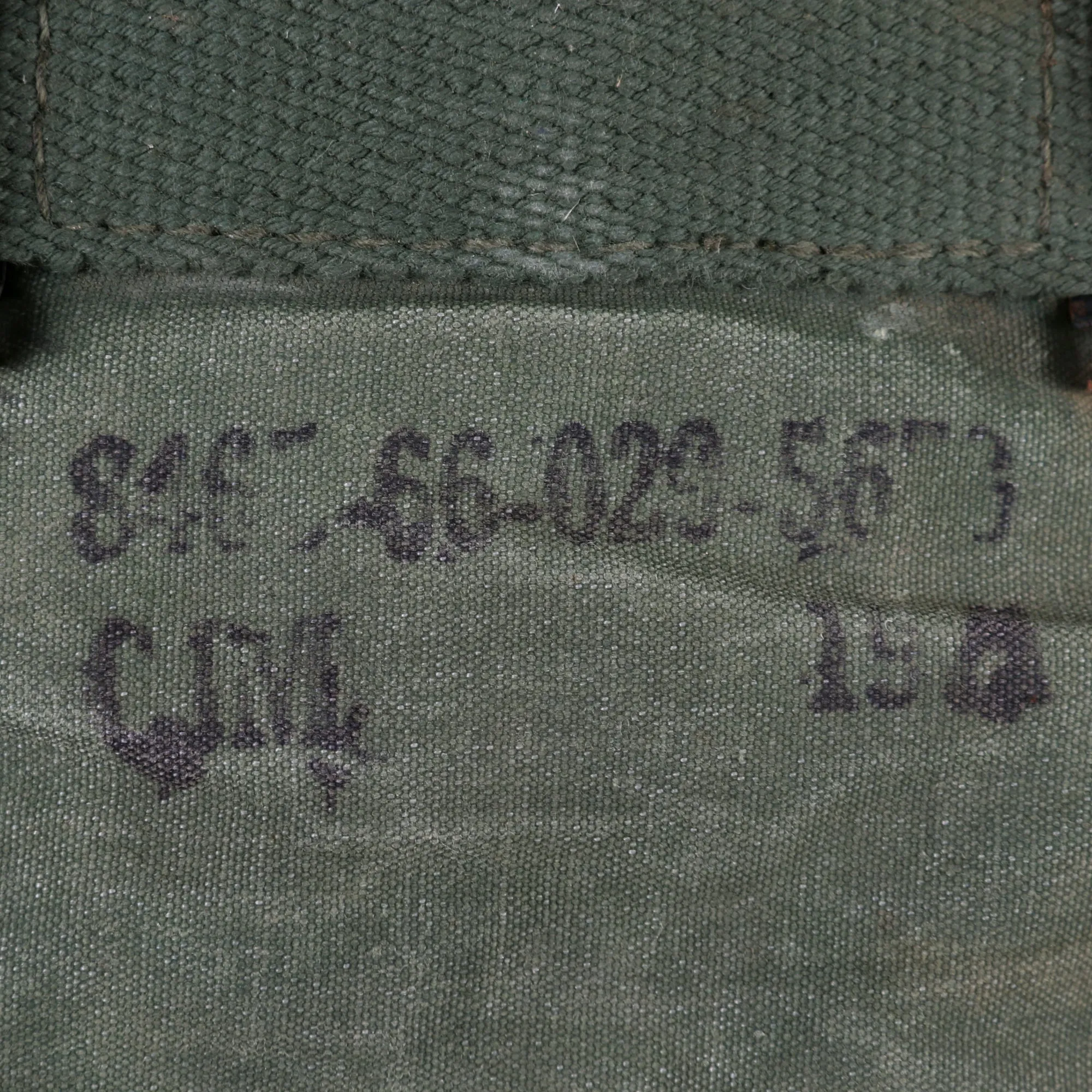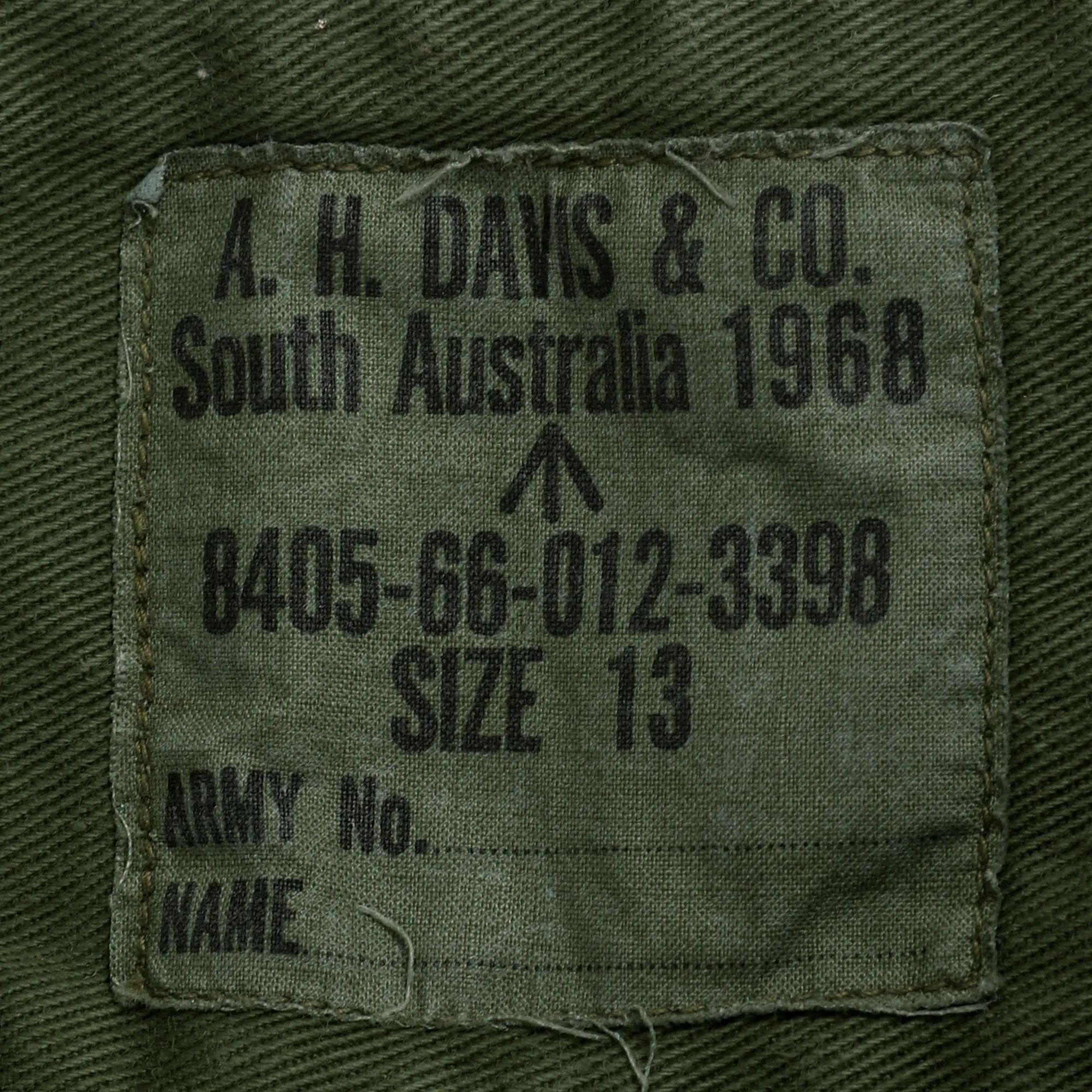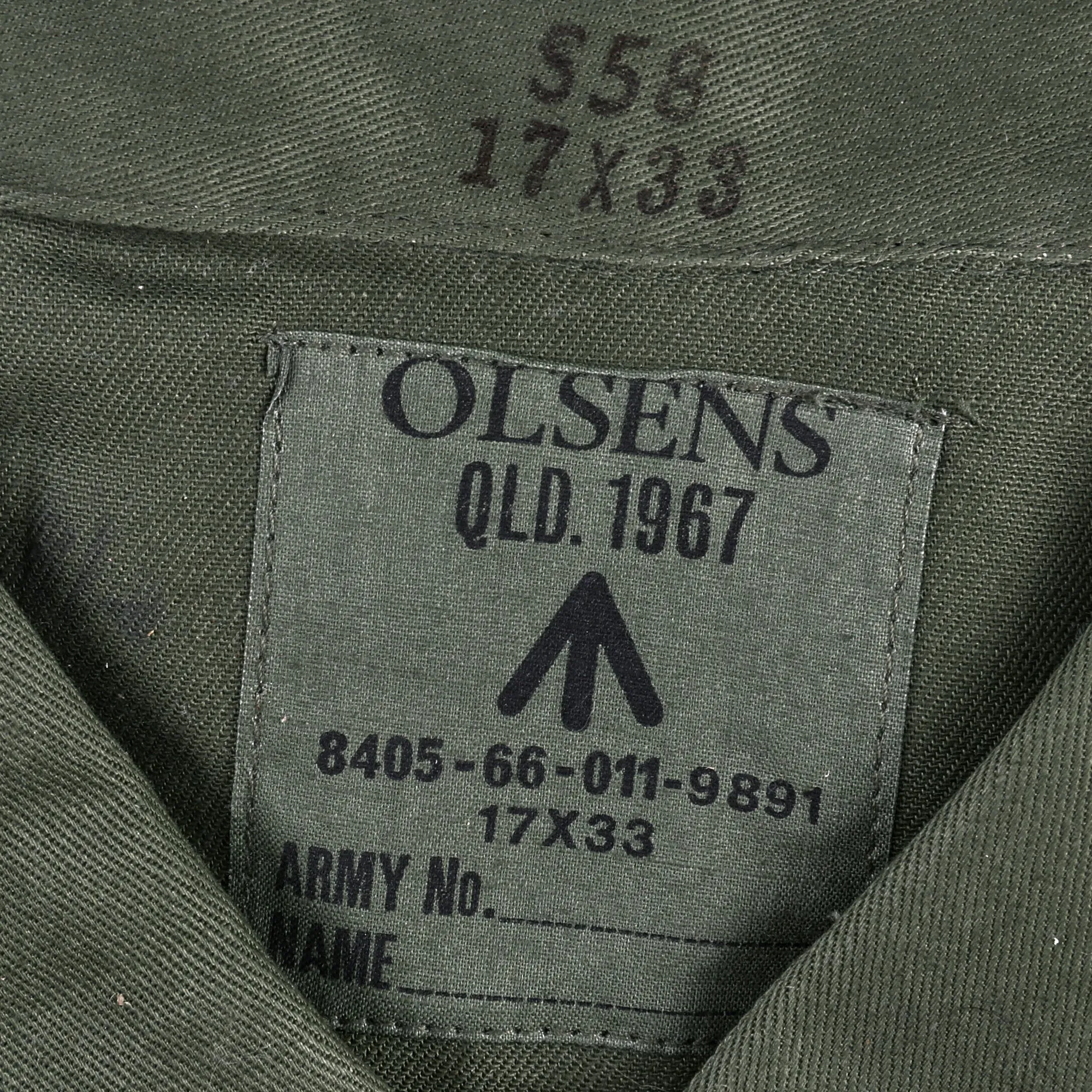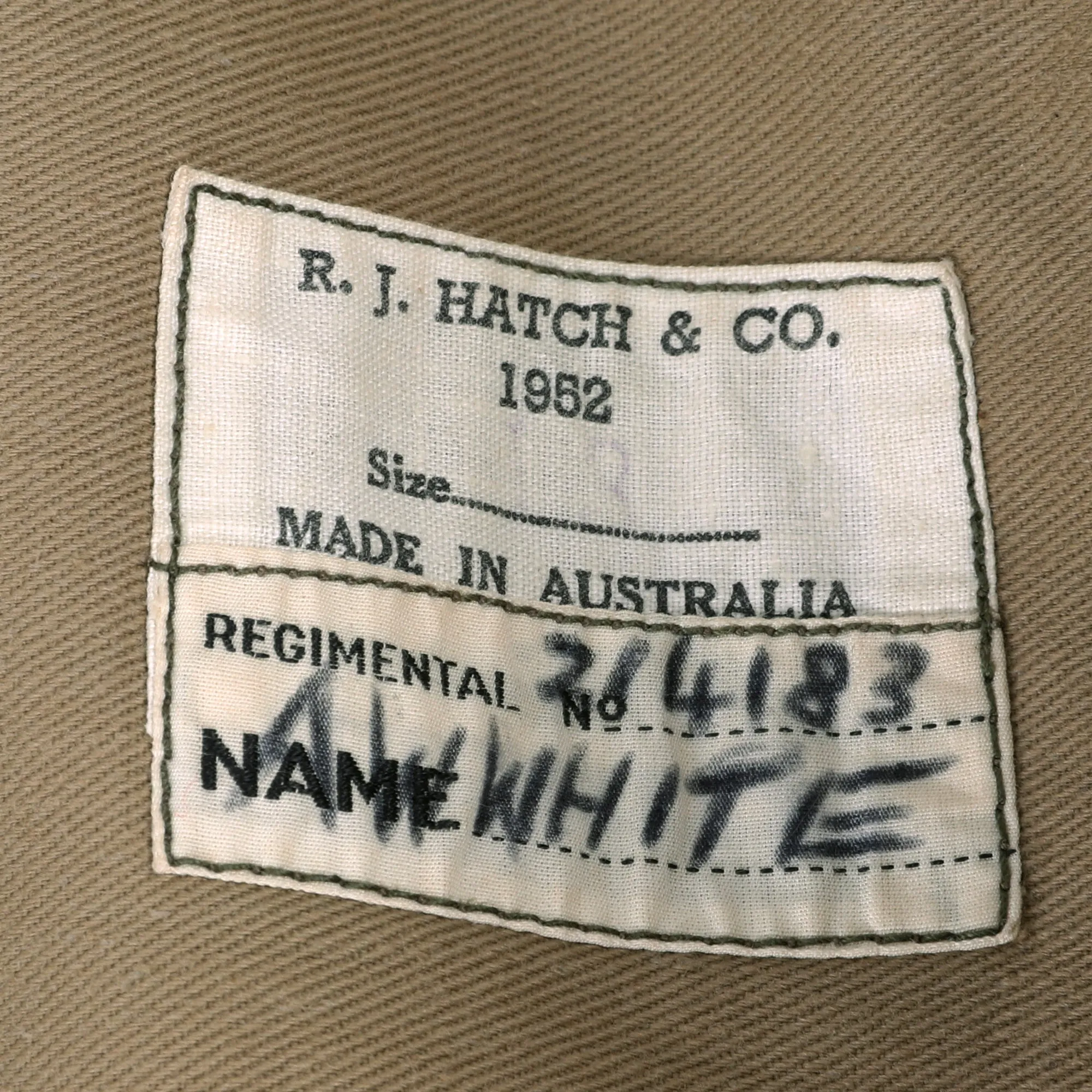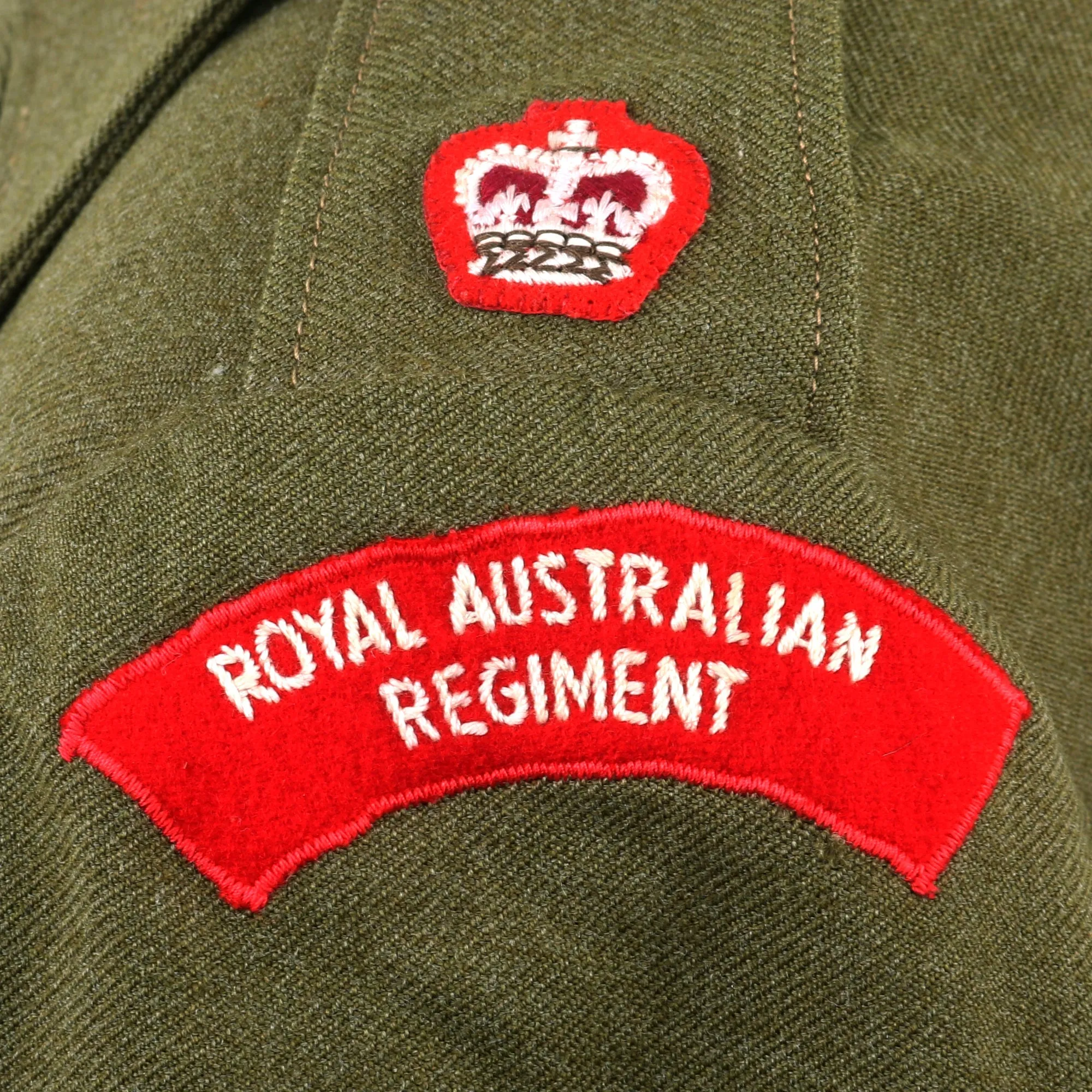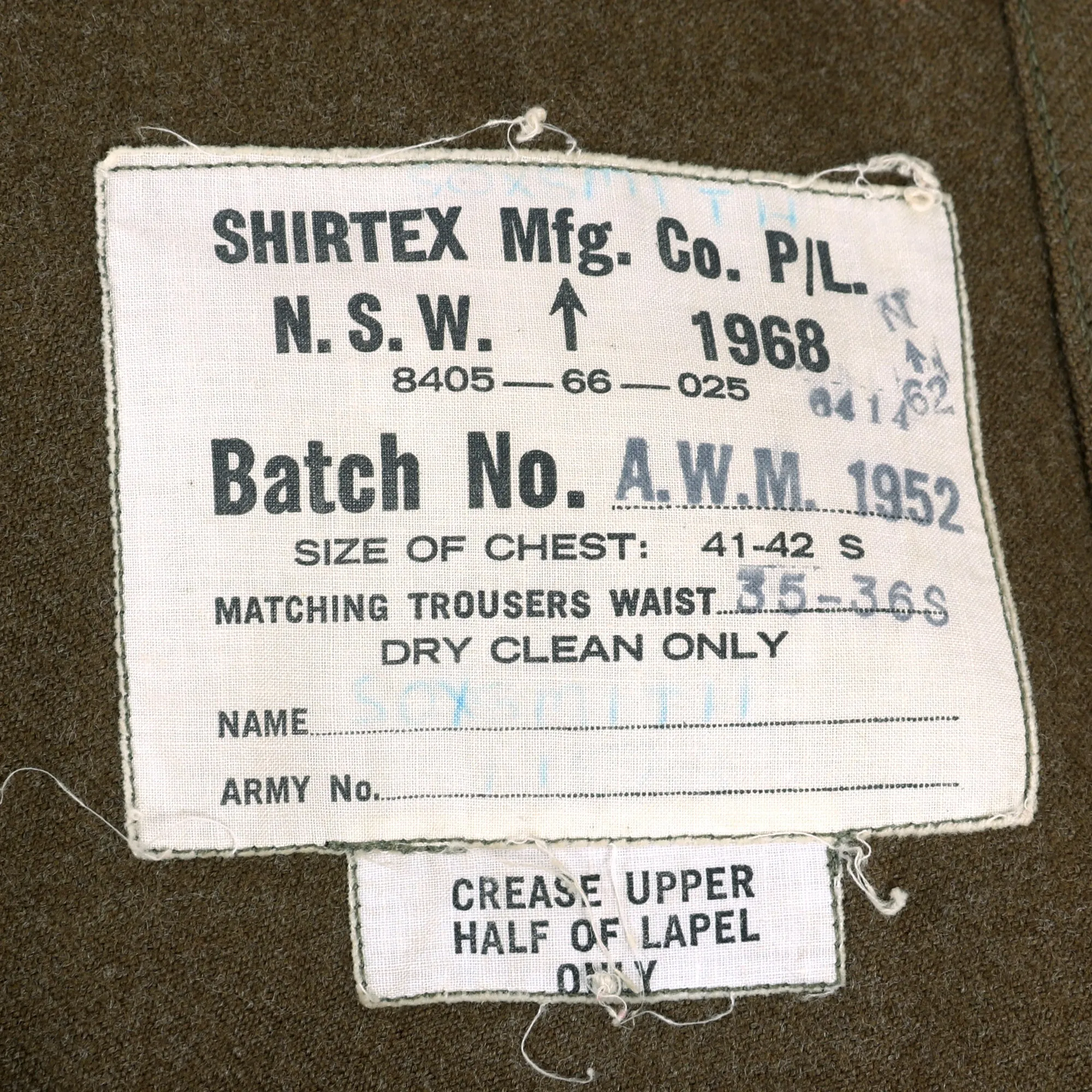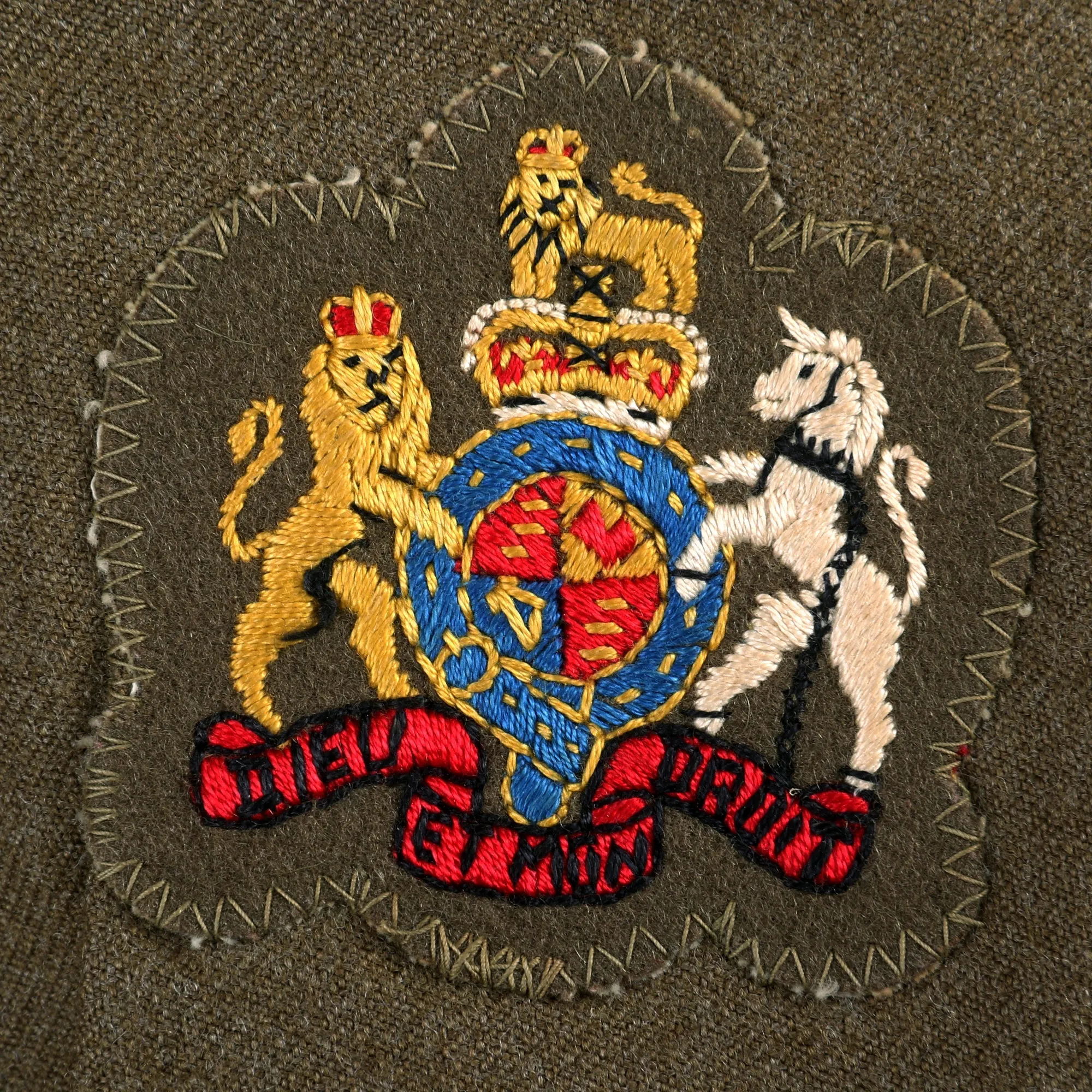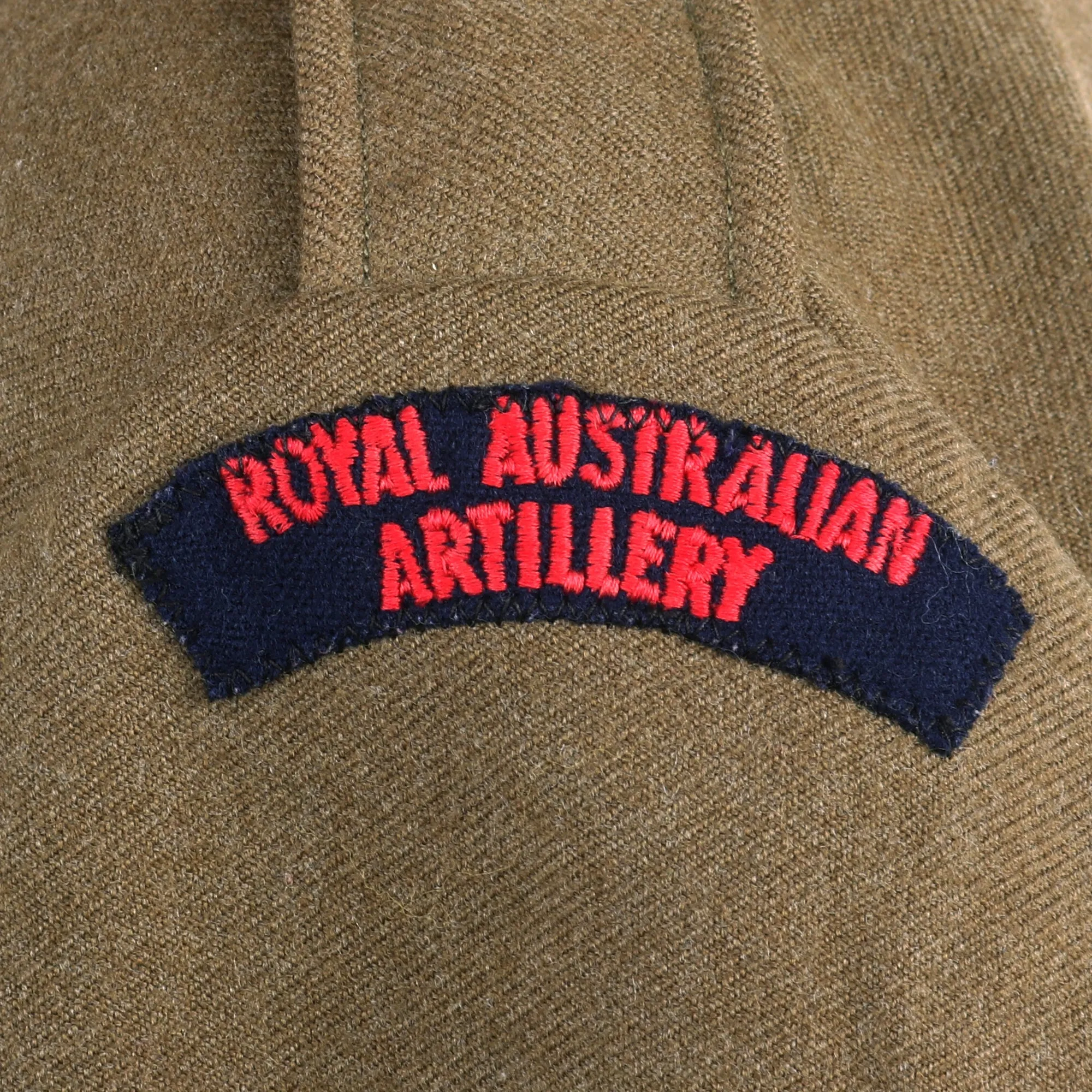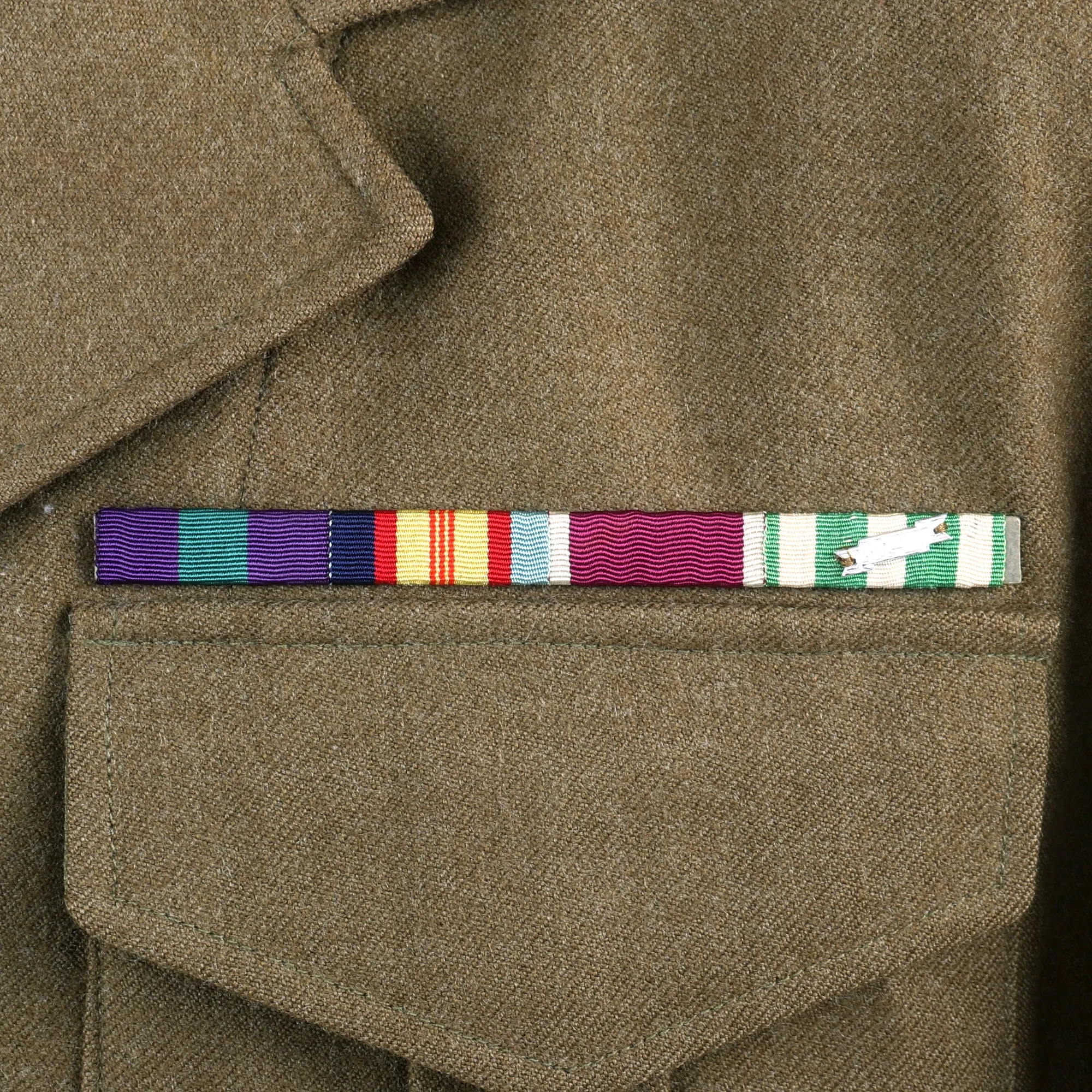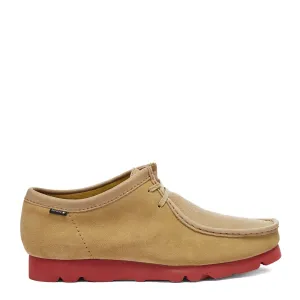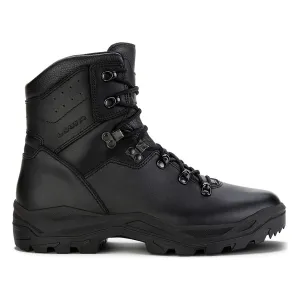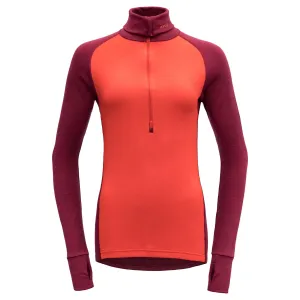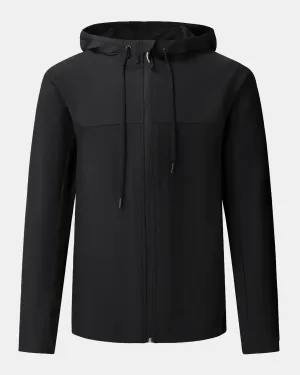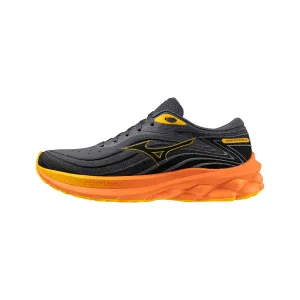Original Items. Only One Lot Available. This is a great scarce lot of Australian uniforms and field gear used during the Vietnam War. They utilized a wide range of gear, including surplus WWII gear. This collection showcases the mix-and-match approach to web gear that was common among Australian soldiers in Vietnam.
Australia's involvement in the Vietnam War began with a small commitment of 30 military advisors in 1962 and increased to a peak of 7,672 Australian personnel. The war became Australia's longest, and it remains the largest force contribution to a foreign conflict since World War II. The withdrawal of Australia's forces from South Vietnam began in November 1970 and was completed by January 1973. Approximately 60,000 Australians served in the war, with 521 killed and over 3,000 wounded.
The items in this lot include:
-Australian Paratrooper Ike-style Warrant Officer Class 2 uniform jacket with shoulder tabs for Royal Australian Regiment, paratrooper wings on shoulder, and 2-place ribbon bar. Jacket is in great condition with few flaws.
-Australian Army Ike-Style jacket with shoulder tabs for Royal Australian Artillery, white uniform shoulder cord, insignia cuff tabs, and 4-place ribbon bar. Jacket is in great condition with few flaws.
-Australian uniform shirt by Olsens, QLD, dated 1967. Size 17x33. Still folded together. Great unissued piece.
-Australian Slouch hat dated 1968, Size 6¾, by Fayrefield in Melbourne. Named to Jack Sibthorpe, IRA. Hat band is present but no hat band, leather sweatband and chinstrap are all well-retained.
-Vulseal Footwear brand Australian army shoes, missing their shoelaces but in good service-worn condition. Heels are worn from use. Tags in shoes are heavily worn but appear to be Size 7½.
-Australian wool socks, army green color. Some holes but great display piece.
-Australian field green pants by A.H. Davis & Co, dated 1968 and Size 13. Buttons are all retained and in good shape. Great unissued set perfect to go with the shirt.
-Australian “Si-Ro Set” service dress uniform pants, green, written tag reading Cott 1788. Broad arrow stamped, buttons all retained and in good condition. Some nips across.
-Scarce Australian Jungle Rucksack with camouflage liner. Has back padding, all straps in good shape and retained. This is an extremely scarce piece of field gear on its own.
-Australian green beret-style cap with tying string in back, no liner and broad arrow marked. Size 7⅞.
-Scarce Trojan 1966-Dated Australian folding shovel with original belt carrier. Still retains most of green paint on spade, paint on handle is chipping heavily. Marked on back, great shape overall. Small metal pins on back are rusted. Most troops used U.S. borrowed tools, so this is a very rare piece.
-Australian Vietnam War belt rig with three pouches, field suspenders. Basically a copy of the M1956 American field gear set. All pieces are broad arrow Australian marked and war-time dated. A phenomenal set to find on its own.
This is a tremendous and extensive set of Vietnam War Australian field gear. If you are familiar with Australia’s role in this conflict, you know how rare some of these pieces are. Comes ready for further research and display!
Australia's involvement in the Vietnam War was driven largely by the rise of communism in Southeast Asia after World War II, and the fear of its spread, which developed in Australia during the 1950s and early 1960s. Following the end of World War II, the French had tried to reassert control over French Indochina, which had been occupied by Japan. In 1950, the communist-backed Việt Minh, led by Ho Chi Minh, began to gain the ascendency in the First Indochina War. In 1954, after the defeat of the French at the Battle of Dien Bien Phu, the Geneva Accords of 1954 led to the splitting of the country geographically, along the 17th parallel north of latitude: the Democratic Republic of Vietnam (DRV) (recognised by the Soviet Union and the People's Republic of China) ruling the north, and the State of Vietnam (SoV), an associated state in the French Union (recognised by the non-communist world) ruling the south.
The Geneva Accords imposed a deadline of July 1956 for the governments of the two Vietnams to hold elections, with a view to uniting the country under one government. In 1955, Ngô Đình Diệm, the prime minister of the State of Vietnam, deposed the head of state Bảo Đại in a fraudulent referendum and declared himself President of the newly proclaimed Republic of Vietnam. He then refused to take part in the elections, claiming that the communist north would engage in election fraud and that as a result they would win because they had more people. After the election deadline passed, the military commanders in the North began preparing an invasion of the South. Over the course of the late 1950s and early 1960s this invasion took root in a campaign of insurgency, subversion and sabotage in the South employing guerrilla warfare tactics. In September 1957, Diem visited Australia and was given strong support by both the ruling Liberal Party of Australia of Prime Minister Robert Menzies and the opposition Australian Labor Party (ALP). Diem was particularly feted by the Catholic community, as he pursued policies that discriminated in favour of the Catholic minority in his country and gave special powers to the Catholic Church.
By 1962, the situation in South Vietnam had become so unstable that Diem submitted a request for assistance to the United States and its allies to counter the growing insurgency and the threat that it posed to South Vietnam's security. Following that, the US began to send advisors to provide tactical and logistical advice to the South Vietnamese. At the same time, the US sought to increase the legitimacy of the South Vietnamese government by instituting the Many Flags program, hoping to counter the communist propaganda that South Vietnam was merely a US puppet state, and to involve as many other nations as possible. Thus Australia, as an ally of the United States, with obligations under the ANZUS Pact, and in the hope of consolidating its alliance with the US, became involved in the Vietnam War. Between 1962 and 1972, Australia committed almost 60,000 personnel to Vietnam, including ground troops, naval forces and air assets, and contributed significant amounts of materiel to the war effort.

 Cart(
Cart(